

The United States SPECIALIST

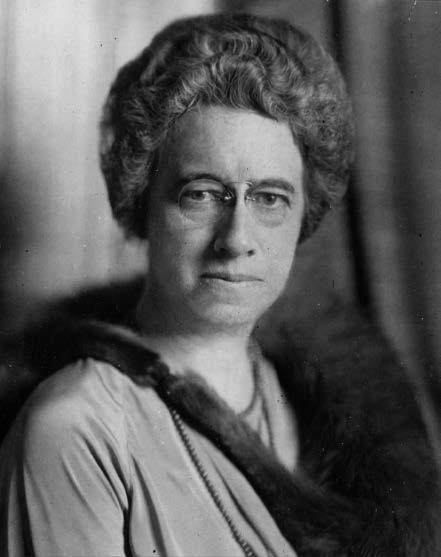



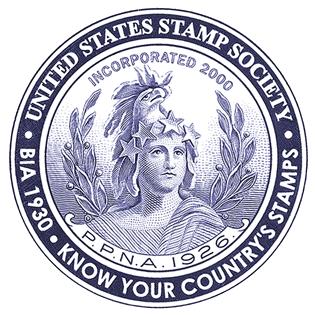

Encyclopedia of United States Stamps and Stamp Collecting Second Edition
Edited by Rodney A. Juell, Lynn R. Batdorf and Steven J. Rod
Hardbound, 769 pages. $35 members, $40 nonmembers. Visit the website for shipping costs.

United States Savings Stamps by Harry K. Charles, Jr.
A presentation of the United States Postal and Treasury Savings Stamp Systems, the stamps and their closely associated collection cards and booklets, and Official Mail stamps and stationery.
Softbound, 253 pages.
Postpaid: $25 members, $28 nonmembers. Visit the website for shipping costs.
Order from: USSS, P.O. Box 1602, Hockessin, DE 19707-5602 or online at: www.usstamps.org/store/

96,
The United States SPECIALIST
the journal of the United States Stamp Society
7 J ULy 2025
1145
An association of collectors to promote the study of all postage and revenue stamps and stamped paper of the United States and US-administered areas produced by the Bureau of Engraving and Printing and other contract printers. American Philatelic Society Affiliate No. 150
Vintage
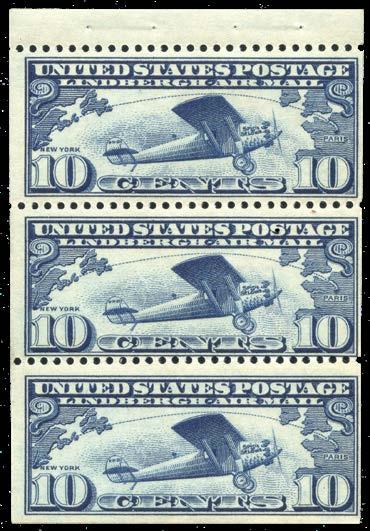
Andrew S. Kelley, Editor 9038 East 25th Drive Denver, CO 80238 (720) 839-5848
email: editor@usstamps.org www.usstamps.org
Manuscripts, publications for review, and all advertising including classifieds, should be sent to the Editor at the address above.
Forms close on the 20th of the second month preceding the month of publication, as February 20 for the April edition.
The United States Specialist (ISSN 0164-923X) is published monthly January through December by
291 Are Booklet Panes the Rodney Dangerfield of US Stamps? by Ken Zierer
305 Great Americans Issue, Part XIV— Issues Produced by Stamp Venturers by Jay Stotts

315 FDR and the 1927 Lindbergh Airmail Stamp, Part II by Paul M. Holland

Mrs. Glover’s Harding Memorial FDCs by Jerry A. Katz
the United States Stamp Society, Inc., P.O. Box 1602, Hockessin, DE 19707-5602. Membership in the United States $25. North America $40; all others $65. Single copy $2. Periodical postage paid at Hockessin, DE, and at additional entry offices. Printed in USA.
Copyright ©2025United States Stamp Society, Inc. All rights reserved. Opinions expressed by authors are their own and do not necessarily reflect those of the United States Stamp Society, its officers, or staff.
Correspondence concerning business affairs of the Society, including membership and changes in address, should be addressed to the Executive Secretary, PO Box 1602, Hockessin, DE 19707-5602.
Postmaster: Send address changes to U.S.S.S., P.O.
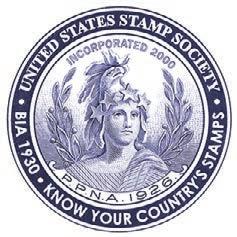
The United States Specialist
Founded 1930 as The Bureau Specialist
EDITOR
ANDREW S. KELLEY
9038 East 25th Drive Denver, CO 80238 email: editor@usstamps.org
United States Stamp Society Bureau Issues Association, Inc.
P.O. Box 1602 Hockessin, DE 19707-5602
CHAIRMAN
Roger S. Brody
P.O. Box 5836 Somerset, NJ 08875-5836 email: brody@usstamps.org
PRESIDENT
Nicholas Lombardi
P.O. Box 1005 Mountainside, NJ 07092 email: 8605@comcast.net
VICE PRESIDENT
Jeffrey Shapiro
P.O. Box 3211 Fayville, MA 01745-3211 email: coverlover@gmail.com
SECRETARY
Joel Cohen
10703 Kings Riding Way, Unit T-1 Rockville, MD 20852-5420 email: cohenji@comcast.net
TREASURER
David S. Sugar 4045 N. Harvard Ave. Arlington Heights, IL 60004 email: david-sugar@wsdd.com
GOVERNORS
Lynn Batdorf
Kim Johnson
Mike Lampson
Leonard Piszkiewicz
James Robinson
Robert Rose
Rod Juell
Gregory Shoults
David Steidley
Jay Stotts
Steven Unkrich
EXECUTIVE
SECRETARY
Robert Rufe
P.O. Box 1602
Hockessin, DE 19707-5602 email: execsecretary@usstamps.org
— Committees — AWARDS
Denise Stotts
email: stottsjd@swbell.net
BOOKLETS & BOOKLET PANES
Michael O. Perry
P.O. Box 1194, Rainier, OR 97048 email: MOPerry@mac.com
DURLAND EDITOR
Kim D. Johnson
310 E N 3rd Street, Georgetown, IL 61846 email: westhome1@aol.com
ESSAY-PROOF
James Patterson
1850 North Central Avenue, No. 1400 Phoenix, AZ 85004 email: jhpatterson@yahoo.com
EXHIBIT PDFs
Chris Steenerson
P.O. Box 1818
Westminster, CO 80038-1818
email: Chris@RxStamps.com
FARLEY ERA
Paul M. Holland
email: pholland.thorleaf@gmail.com
FOURTH BUREAU ISSUE
Jay B. Stotts email: stottsjd@swbell.net
LIBERTY SERIES
Roland Austin P.O. Box 2641, Stillwater, OK 74076-2641 email: RAustin13@aol.com
MARGINAL MARKINGS
Chris Steenerson P.O. Box 1818 Westminster, CO 80038-1818 email: Chris@RxStamps.com
MODERN POSTAL HISTORY
Douglas B. Quine P.O. Box 153, Bethel, CT 06801-0153 email: usss2010@quine.org
PLATE NUMBER & CHECKLIST SERVICE
Kim D. Johnson
310 E N 3rd Street, Georgetown, IL 61846 email: westhome1@aol.com
PRECANCELS
Lynn R. Batdorf 6005 Kingsford Road, Bethesda, MD 20817 email: hollykids@comcast.net
PRESIDENTIAL ERA
Jeffrey Shapiro P.O. Box 3211, Fayville, MA 01745-3211
RECRUITING
Steven Crippe PO Box 117001, Carrollton, TX 75011 email: scrippe@gmail.com
REVENUE ISSUES
Peter Martin
P.O. Box 6074, Fredericksburg, VA 22403 email: pmartin2525@yahoo.com
SECOND BUREAU ISSUE
Nicholas Lombardi
P.O. Box 1005, Mountainside, NJ 07092
VENDING AND AFFIXING MACHINE PERFORATIONS
Dan Ryterband 40 Carolyn Place, Chappaqua, NY 10514 email: djryterband@fwcook.com
WASHINGTON-FRANKLIN
HEAD ISSUES (Co-Chairmen)
Greg Shoults 11248 Frederick Lane Twinsburg, OH 44087 email: coilcollector@hotmail.com
Andrew S. Kelley 9038 E 25th Dr, Denver, CO 80238 email: stamps@andrewkelley.net
WEBMASTER
Mike Lampson
P.O. Box 471963, Charlotte, NC 28247 email: lampson@usstamps.org
— Study Groups — DUMMY STAMPS
Terry R. Scott
P.O. Box 10406, Napa, CA 94581 email: terryrscott@comcast.net
FIRST BUREAU ISSUE [open]
LUMINESCENCE
Wayne L. Youngblood 705 Forest Glen Circle, Prairie du Sac WI 53578 email: wystamps@gmail.com
OVERRUN COUNTRIES SERIES
Thomas Schilling
P.O. Box 432, New Lisbon, NJ 08064-0432 email: cbtkschilling@yahoo.com
PROMINENT AMERICANS AND AMERICANA SERIES
Ron Blanks
P.O. Box 9282, Chesapeake VA 23321 email: rblanks_stamps@yahoo.com
REGISTERED MAIL
Mike Ludeman
P.O. Box 2024, Denton, Texas 76202-2024 email: mike@ludeman.net

Are Booklet Panes the Rodney Dangerfield of US Stamps?
There is a perpetual “minor” problem with their Scott listing
by Ken Zierer USSS # 12533 | m kenzierer@yahoo.com

I tell you, I get no respect at all. My psychiatrist told me I was crazy and I said I wanted a second opinion. He said okay, you’re ugly too.
Rodney Dangerfield
This article will be peppered with Rodney one-liners to keep you amused while I present my case.
Collectors of United States stamps and covers may have missed this, but we recently celebrated the centennial anniversary of the inaugural Scott Specialized Catalogue, first issued in 1923. The collective efforts and scholarship of countless philatelists, dealers, and editorial boards over more than a century have shaped its contents, culminating in a tome worthy of its unofficial designation as “the bible of United States stamp collecting.”
Still, some would say it is far from a perfect work and over the years certain editorial decisions involving additions, deletions or rearrangements have courted controversy within the philatelic community. This is especially true over the past few years as the inevitable steady stream of new issues coupled with the desire to add new sections has led to the removal of some existing sections plus the shrinkage of images in other sections, all to prevent further expansion of a single volume Specialized that had reached maximum publishing dimensions.
My own suggestion would have been to eliminate nothing and issue a two-volume bundled Specialized, but I digress, as my issue is not with current editorial decisions, it is with past ones. This article will present my case to correct a longstanding flaw in the listing practices of Scott pertaining to booklet panes.
The Background Story
Prior to 1900, post offices sold stamps in just one format, specifically stamp sheets. This would change in the ensuing decade, first in 1900 when stamp booklets were introduced and eight years later when stamps in coil form were produced.
The demand for stamps in booklet form is evidenced by the many patents and items that emerged in the late nineteenth century. There was a constant need for portable devices that could store and protect small quantities of postage stamps and allow the public to carry them in a purse, wallet or pocket. Many designs also included waxed paper interleaves to reduce premature moistening of stamps from excess humidity in a world before air-conditioning. Numerous examples were offered as giveaways from companies and were emblazoned with their advertisement. Some of the items are shown here and include examples made from cardboard, leather, celluloid, gutta-percha, and metal, including silver and gold. (Figure 1)
Non-postage stamps manufactured in booklet form were already familiar to people in the telegraph and express mail

Figure 1. An assortment of postage stamp holders.
industries dating back to 1870. The National Banknote Company had perfected mass production of booklets for Western Union, and their booklets had all the elements of what would, decades later, become incorporated in the first US postage stamp booklets. These included cardboard covers, panes with binding tabs for stapling, protective interleaves, and informative text about rates and usage. (Figure 2)

Soon after Edwin C. Madden became Third Assistant Postmaster General in 1899, he initiated an inquiry into the production of stamps in booklet form. After potential legal obstacles were cleared, including questions about possible patent infringement and the legality of adding a surcharge to the booklets, the Bureau of Engraving and Printing began production. Using the same dimensions as the standard 400-subject plates, they designed and laid out special 360-subject plates. These plates contained 60 panes of six stamps each, arranged in six rows of 10 panes, with space at the top of each pane for the binding selvage. (Figure 3)
Booklet assembly required additional materials and labor, specifically printed cardboard covers, sheets of waxed paper interleaves, and stapling wire. To offset these additional costs, a one-cent surcharge was added to each booklet. Since the actual production costs incurred by the Bureau and charged to the Post Office Department were less than half that amount, the one-cent surcharge netted the Post Office Department a small amount of additional revenue with the sale of each booklet.
The booklets were released in April 1900, and ceremonial specimen booklets were prepared and given out to various officials. (Figure 4)
They were instantly popular with the public and sold very well, but the stamp collecting community largely ignored them, considering them to be essentially identical to the current sheet stamps but with the undesirable attribute of each stamp having either one or two straight edges. Whole booklet panes as a distinct variety of six stamps with binding selvage were not initially recognized by collectors.
Less than two years after their initial release, booklet pane production at the Bureau underwent a significant change. Misperforating and miscutting of the panes had been persistent problems due in large part to uneven paper shrinkage after drying. This shrinkage resulted from the dampening required for intaglio printing. Paper shrinks significantly more across the grain than with it, so 360-subject booklet pane sheets and 400-subject sheet stamps shrank the same way in the horizontal (left-right) direction.
Figure 2. An 1873 Western Union booklet.

Figure 3. Proof sheet of plate 988, the first booklet pane plate produced. (Courtesy Smithsonian National Postal Museum.)
Figure 4. Souvenir booklet signed by Edwin C. Madden containing Specimen overprinted panes. It reads, “One of the first one-hundred books issued. Edwin C Madden, Third Asst. P.M. Gen., April-1900.”

(Figure 5). Shrinkage was also uneven and occurred more towards the sides and less in the middle of the large press sheets. However, horizontal dimensional stability was crucial for booklet pane perforating and, more importantly, for accurately cutting individual booklet panes, which were concealed within the covers.

Uneven shrinkage issues in the vertical (up-down) direction were less of a problem for proper perforating and cutting of booklets, mostly because the printing gap provided by the binding selvage allowed for variability with paper shrinkage. So, the simple solution would be to print booklet panes on paper where shrinkage would be in the vertical (up-down) direction. But where would the Bureau get that paper? Well, it turns out they already had plenty of it.
Regular sheet issues were either printed from 400-subject plates or 200-subject plates. Stamps that were needed in large quantities were printed on 400-subject plates, while the ones needed in smaller quantities were printed on 200-subject plates. Most of
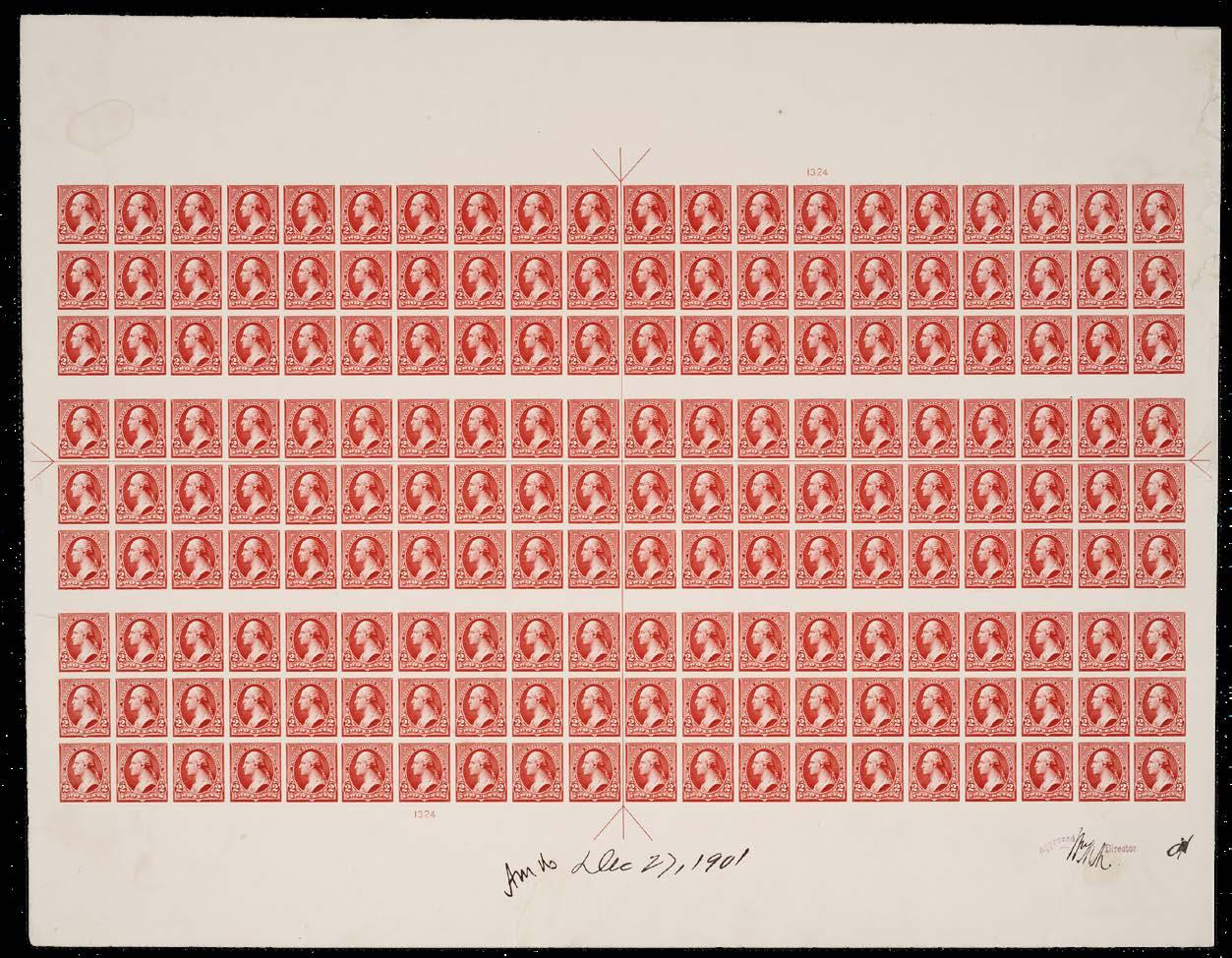
Figure 5. Relationship of grain, watermark and paper shrinkage.
Figure 6. Proof sheet of Plate 1324, the first 180-subject booklet pane plate. (Courtesy Smithsonian National Postal Museum.)
the time, the latter consisted of the higher-denominated stamps. The paper supply at the Bureau for 400-subject plates had a vertical grain and a horizontal reading watermark. But for reasons I’ve never understood, the paper supply for 200-subject plates had a horizontal grain and a vertical reading watermark.
The 2¢ ordinary sheet stamps were always printed from 400-subject plates, but now new 180-subject booklet pane plates were created to utilize the desired paper. The last set of 360-subject booklet pane plates were certified in early October 1901 but never went to press. Instead, the Bureau certified the first set of 180-subject plates on December 27, 1901, and they went to press three days later. (Figure 6).
The Bureau printed booklet pane stamps this way for over seven years. By mid-1909, they decided to return to printing booklet panes from 360-subject plates, but since they needed to maintain the same paper orientation, they requested and obtained “special paper,” which was paper for the large size plates but with the horizontal grain and vertical reading watermark. This “special paper” would be regularly used until 1928 when nearly all booklet pane printing had transitioned to the Stickney rotary presses.
Printing booklet pane stamps on paper with a horizontal grain fundamentally changed the characteristics of the stamps compared to their sheet stamp counterparts. Visually, the booklet pane stamps became slightly shorter and wider, and the watermark vertically oriented instead of horizontally. This change went largely unnoticed in a philatelic community uninterested in booklet panes, even though the new layout created new guideline positions and eliminated others. (Figure 7).
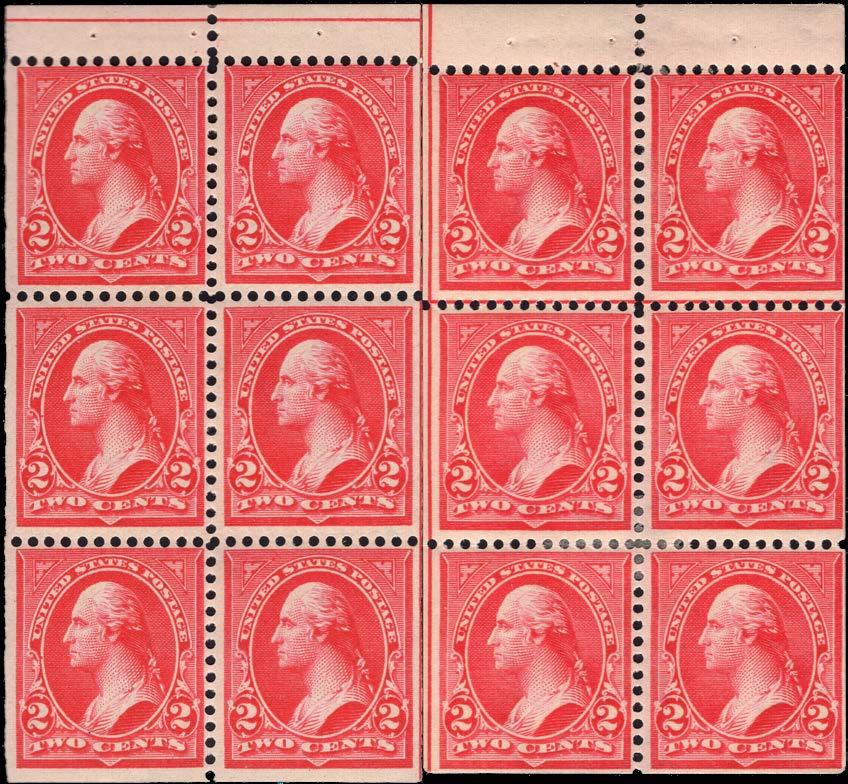
Figure 7. Panes from 360-subject and 180-subject plates.
“
I could tell my parents hated me. My bath toys were a toaster and a radio.
Rodney Dangerfield
Coil Stamps Arrive
In late 1906, the Post Office Department began selling full imperforate press sheets of 400 to manufacturers of vending and affixing machines. These companies then prepared coils using their proprietary perforations.
In 1908, the Post Office Department began issuing stamps in coil rolls, initially to firms that participated in a postage vending machine competition sponsored by the Postmaster General. Entrants could order the stamps coiled “sidewise” or “endwise,” with or without perforations, and in rolls of 500 or 1000 stamps.1
The Bureau’s production of coil stamps consisted of using full 400-subject sheet stamps and perforating the sheet in one direction if they were manufacturing perforated coils and omitting this step for imperforate coils. The sheets were then cut into strips of 20 stamps each, and these strips were then manually pasted together and wound into rolls.
The 1908 orders were only provided to eight firms that participated in the competition and were made of stamps from the Series of 1902. Given their limited production and distribution, several of these coils are among the rarest stamps in 20th-century US philately.
In 1909, postmasters began accepting orders for coil stamps from businesses. These were now being manufactured with the new Washington-Franklin series.
By 1910, the increasing demand for coils necessitated a change in manufacturing from the slow, labor-intensive manual method to a more automated method, using a Stickneydesigned “Auto-Wound” system to keep up with demand. This mechanization, however, put too much tension on gauge 12 perforated strips, leading to frequent breaks and repair of the strips. The solution was a new and much stronger 8 ½ gauge coil perforation.
In 1914, coil production took a giant leap forward with the development of web-fed Stickney rotary presses and ended flat-plate coil production from sheet stamps.
Catalogue Listing
As the first edition of the Scott Specialized Catalogue would not appear until 1923, collectors before this time primarily relied on the annual Scott Standard Postage Stamp Catalogue for information about US issues.
When the first booklet panes were issued, the Scott Catalogue did not list or even acknowledge their existence. This omission was likely due to the perception that booklet panes were no different from their sheet stamp counterparts despite their unique plate layout and perpendicular watermark orientation. The omission is particularly revealing, as the Scott Catalogue at the time served not only as a reference guide but also as a retail price list for the Scott Stamp & Coin Company. Items listed in the Catalogue could be purchased directly at their catalogue value.
Contemporary philatelic periodicals also made little to no mention of booklet panes, indicating that interest in them was virtually nonexistent during their first decade. This general disregard by dealers and collectors is reflected in the current rarity of many early booklet pane positions and plate number panes, as few were retained as collectibles.
However, as more booklet panes were issued over the next decade, some interest emerged. In 1913, a landmark article by George Beans in Everybody’s Philatelist laid the foundation for booklet pane collecting and established the standard for classifying booklet pane positions.2
Expanding on this article, in 1914 H. L. Wiley wrote a comprehensive handbook on booklet panes including a complete list of all the plate numbers used to date.3
Despite growing interest in booklet pane collecting, they remained unacknowledged in the Scott Standard Postage Stamp Catalogue.
“ I remember the time I was kidnapped, and they sent a piece of my finger to my father. He said he wanted more proof.
Rodney Dangerfield ”
Coil stamps had better luck in the catalogue. After imperforate sheets were issued in 1906, the imperforate stamps were immediately listed as an unlettered minor variety under the sheet stamp listing. The perf 12 coils of the Series of 1902 and the WashingtonFranklin series were not listed initially, likely for the same reason booklet panes had been omitted; they were partially perforated but fundamentally similar to the sheet stamp. Initially, there was an erroneous belief that coils could simply be imitated by trimming the sides of sheet stamps.
When the perf 8½ coils debuted, they quickly received catalog listings since their distinctive perforation gauge easily set them apart from the sheet stamp. In 1914 and thereafter, coil stamps were printed on Stickney rotary presses, and all received catalog listings. As a matter of completeness, the originally omitted perf 12 coils were then added.
The Scott Specialized Catalogue
The arrival of the 1923 inaugural edition of Scott’s Specialized Catalogue was a watershed moment for booklet panes.
On the catalog’s very last page of regularly issued stamps, the existence of booklet panes was finally acknowledged. Curiously, they were not given a lowercase letter designation after the catalog number and instead shared the same catalog number with their corresponding sheet stamp. This contrasted with the perforated coil issues, Figure 8. The first listing of booklet panes in 1923.

which all had a lowercase letter after the catalog number to set them apart from the sheet stamps. (Figure 8)
Things changed the very next year. In the 1924 Scott Specialized, coil stamps and the imperforate issues were elevated to major catalog number status, and this necessitated the assignment of new numbers for them. This caused a seismic shift in previously established catalog numbers to retrofit these older issues into the catalog. Every stamp issued after 1902 shifted, some enormously. For example, Scott 314, the 2¢ Washington Shield stamp became Scott 319, Scott 347, the 1¢ Panama-Pacific stamp became Scott 397, and Scott 450, the 1920 5¢ Pilgrim Tercentenary Stamp, became Scott 550. The more recent the issue, the greater the shift. (Table 1)
Examples of the 1924 Scott renumbering shift to accommodate new listings Issue Issue year 1923 Cat # 1924 Cat # Degree of shift
2¢ Washington Shield 1903 314 319 +5
1¢ Panama-Pacific 1912 347 397 +50
5¢ Pilgrim Tercentenary 1920 450 550 +100
Table 1.
The massive restructuring of the numbering system would have been an ideal time to elevate and integrate booklet panes into this new system, but that did not happen, and they remained sequestered in their isolated location.
This seclusion persisted for the next five years. Then, for the 1929 edition, a decision was finally made to include booklet panes in the main listings. But where to put them? The only practical place was to list them with their sheet stamp equivalent, as the imperforate and coil varieties had previously been prior to their promotion to major variety status with separate catalog numbers.
Booklet panes were finally in the neighborhood but not in their own home and were apparently still not worthy of a lowercase letter. (Figure 9).

Figure 9. In 1929, booklet panes were finally added to the main listings.
Eight years later, the 1937 Scott Specialized greatly expanded its listings with the goal of listing all known collectible varieties. In the booklet pane section this included illustrations of the plate layouts and descriptions of the pane positions. They also added pricing for plate number panes. Most significantly, they also assigned a lowercase letter after the catalog number, thus finally giving each pane lettered minor status, although as a minor variety of the sheet stamp.
The following year, the 1938 Scott Specialized included, for the first time, US booklet panes overprinted for use in the Canal Zone and the Philippines; however, they would not receive their lowercase letter until 1943. (Figure 10)
The last milestone for booklet panes occurred when the 1977 Scott Specialized expanded booklet pane listings by adding complete booklets using the BK prefix for them and including images of the front covers.

“I told my wife the truth. I told her I was seeing a psychiatrist. Then she told me the truth; she was seeing a psychiatrist, two plumbers, and a bartender.
Rodney Dangerfield
The Elephant in the Room
For more than a century, the fundamental flaw in the Scott listing has been its treatment and listing of booklet panes as minor varieties of sheet stamps. They are not. Booklet panes deserve separate listings just as much as imperforate issues and coils— arguably even more so.
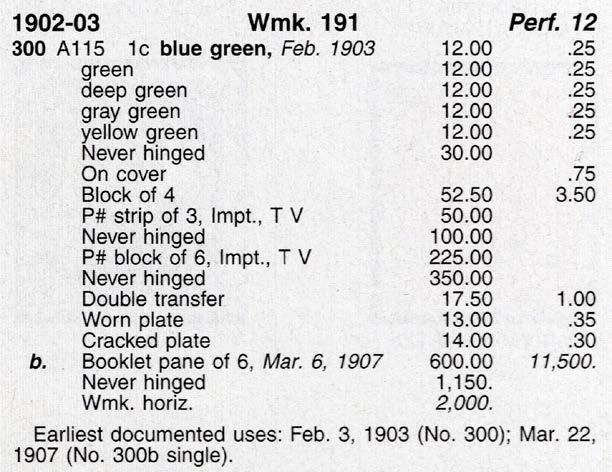
Let’s look at one example. Scott 300 is the 1¢ Franklin sheet stamp from the Series of 1902. Figure 11 shows its listing in a recent Scott Specialized.4 Anchored at the bottom of the listing is Scott 300b, the booklet pane of 6 stamps.
The sheet stamp was produced from 400-subject press sheets that were cut and perforated in both horizontal and vertical directions, yielding sheets of 100 stamps. As earlier noted, the same 400-subject press sheets were used to produce the imperforate sheet—Scott 314, the vertical perf 12 coil—Scott 316, the horizontal
Figure 10. Two of the many booklet panes used in the Canal Zone and the Philippines.
Figure 11. The listing for Scott 300.
perf 12 coil—Scott 318, the vertical imperf coil—Scott 314V and the horizontal imperf coil—Scott 314H. They are all derivatives of the 400-subject press sheet, and all have major numbers and are separately listed.
In contrast, the booklet pane—Scott 300b, was produced from uniquely designed 180-subject press sheets onto paper with a different grain and watermark orientation. The sheets were perforated, collated with waxed interleaves and cardboard covers, cut into strips of 10 panes, stapled, and cut into individual booklets. But somehow, they are a minor variety of the sheet stamp.
In the introduction of the Scott Catalogue, the “Understanding the Listings” section discusses two principal types of listings: major and minor. Major listings have a unique whole catalog number. Some can also have a capital letter prefix such as C1 or E1 to distinguish them as being part of a separate type of issue, for example, airmail or special delivery stamps. They may also have a capital suffix, for example, 279B or 314A . This usually occurs when a stamp not previously recognized as a major variety later becomes one and needs to be inserted into a particular location.
Minor listings have a small letter suffix added and are designated as a variety of the “normal,” or major item. Most minor listed varieties produced during the Bureau era are either color variations or recognized errors. The third most common minor listed variety is booklet panes.
A review of what constitutes major and minor listings, both by definition and through past practices for other items, clearly shows that booklet panes fulfill the criteria for a major listing.
So why, then, are booklet panes perpetually treated as subordinate to sheet stamps and trapped in the confines of their listing?
Although booklet pane production preceded imperforate sheets and coil stamps, there appears to have been an inherent bias against booklet panes in the recognition and listing practices at Scott over a century ago.
Over the ensuing decades, they became entrenched in their current location, and it is unclear whether there have ever been discussions about rectifying this irregularity. It is possible the topic was debated in the past but ultimately deemed either unnecessary or too burdensome to remove and re-catalogue them.
Whatever the reason, it’s not clear whether anyone has ever raised the issue with the editors.
If this were the business or entertainment field, we would say that booklet panes have not had a public relations advocate working for them.
Limitations and Problems with the Current Listing
To strengthen the argument and persuade the editors of Scott to update the current listings, I will present examples demonstrating how the existing listings hinder efficient use and contradict the stated philosophy and goals of the Scott Catalogue.
Booklet panes corrupt the sheet stamp listing. Let’s refer back to the listing for Scott 300 in Figure 11. The entire listing pertains to the different collectable formats for the perforated sheet until you get to the bottom, where an extra three lines pertain to booklet pane listings. The purity of the listing is spoiled by this intruder, like a house guest who never leaves. At least in this example, the booklet pane listing is tucked at the bottom.
Look at the listing for Scott 502 in Figure 12. In this example, the booklet pane, Scott 502b, is awkwardly sandwiched between sheet stamp varieties. In many other listings, visual dexterity is needed to avoid confusion.

12. The listing for Scott 502.
It doesn’t allow for proper listing of booklet pane varieties. Referring to the Scott 300 listing in Figure 11, one of the booklet pane listings is for a horizontally watermarked pane. During a brief period from December 1906 to January 1907, booklet panes, either by accident or due to a shortage of vertically oriented watermarked paper, were printed on paper with a horizontally oriented watermark. This affected both the 1¢ and 2¢ booklet panes, Scott 300b and Scott 319g. Neither of the horizontally watermarked booklet panes have a lowercase letter associated with them, maybe because by convention, you cannot assign a lowercase letter to an item that is a minor variety of another minor variety, in this case, the normally issued booklet pane.
This is in stark contrast to sheet stamp watermark varieties, including Scott 279a and 279Be, which are varieties with vertically oriented watermarks instead of the normal horizontally oriented watermark, and each one has an appropriate minor variety lowercase listing.
Both of the booklet pane issues with horizontally oriented watermarks are scarce and highly desirable varieties worthy of lettered minor status. However, if a lowercase letter is assigned to them, it would violate another principle of catalog listing. Specifically, it would elevate the minor variety to equal status with the “normal” or major item since the major item, in the case of booklet panes, only has a lowercase letter. Scott has done this in some of its listings. For example, Scott 375a is the normal 2¢ carmine perf 12 single-line watermark pane while Scott 375c is the rare lake shade variety pane. The lake shade pane should be a minor variety of the normal pane but is not, since both panes are equally weighted minor varieties of the sheet stamp under the current listing philosophy. A similar situation exists with Scott 634d and 634e. (Figure 13.)

13. Cropped listings for Scott 375 and 634.
It clutters complicated listings. When a sheet stamp issue already has many lettered and unlettered varieties, the added booklet pane listings unavoidably contribute to the bulky listing. This is especially true with two early listings, the First Bureau Issue 2¢ red
Figure
Figure
type IV Washington, Scott 279B, and the 2¢ Washington Shield stamp, Scott 319 and 319F. The 74 listed items under Scott 319 and 319F could be trimmed to 60 if the booklet panes were relocated.
The current listing style unfairly marginalizes booklet panes. While some might label me as partisan with this discussion, it is not hard to objectively observe the inequity in Scott’s treatment of booklet panes compared to their imperforate stamp and coil cousins.
The philatelic world recently witnessed the final sale of the William H. Gross collection by Robert A. Siegel Auction Galleries, Inc.5 This was likely the greatest collection of United States stamps ever formed and was described as “complete,” meaning that it contained at least one of every major Scott-listed postage stamp issued by the United States government. But as long as booklet panes remain a lettered minor variety, there will be no obligation to include them in any “complete collection.” While no one is forced to collect booklet panes regardless of their status in the catalogue, maintaining their current status will mean booklet panes, like Cinderella, can be excluded from the royal ball and will deprive a “complete collection” of their inclusion.
“ ”
I told my doctor I want to get a vasectomy. He said with a face like mine, I don’t need one.
Rodney Dangerfield
A Modest Proposal
Perhaps the idea of disrupting the status quo is unappealing to some. To those people, I say, it’s time to upset the apple cart because someone long ago mixed oranges in with the apples. (Figure 14)

14. A metaphor regarding booklet pane listings.
The extraction of booklet panes from their current confines would not be difficult. The simplest w ay to transform a lettered minor variety to major status, is to simply capitalize the letter and relocate it. The relocation, however, would likely be limited to the spot immediately after the sheet stamp listing. Since essentially all booklet panes are comprised of the lower values of established sets, this would slightly interrupt the aesthetics that Scott has maintained over the years. But this option is far more appealing than creating new major numbers for every pane to relocate them to a spot after their corresponding set.
Table 2 shows the possible revised catalogue numbers for panes of the flat-press era, although all booklet panes, including those in the rotary press and modern era, should be similarly revised.
Figure
Scott Flat-Plate Booklet Pane Catalogue Numbers Current Proposed Current Proposed Current Proposed
279Bj 279J 375a 375A 498f 498F
279Bk 279K 375c 375Ac lake 499e 499E
300b 300B 405b 405B 499f 499F
301c 301C 406a 406A 501a 501A
319g 319G type I 424d 424D 502a 502A 319Fq 319Q type II 425e 425E 552a 552A
331a 331A 462a 462A 554c 554C
332a 332B 463a 463A C10a C10A
374a 374A 498e 498E
Table 2. A suggestion of possible catalogue number changes.
“ ”
My uncle’s
dying
wish–he
wanted me on his lap. He was in the electric chair.
Rodney Dangerfield
Closing Thoughts
My apologies to anyone unfamiliar with the late, great Rodney Dangerfield, but his entertaining persona was the perfect analogy to the central theme of this article. His humor, which focused on one-liners lamenting his hard-luck life, led him to the recurrent conclusion that he got no respect. In a similar way, US booklet panes have lived the life of second-class citizens in the world of philately and thus the only conclusion I can draw is that they, too, get no respect. At least for Rodney and millions of fans, his indignity was comedic gold.
My hope is that this article will promote dialogue, which ultimately validates my contention that booklet panes deserve major catalogue status.
Acknowledgments:
Thank you to Roger Brody and Larry Weiss for reviewing this article. The photograph of Rodney Dangerfield is cropped from the original by Bernard Vidal. The Rodney Dangerfield quotes are from several websites including https://www.goodreads. com/author/quotes/78470.Rodney_Dangerfield and https://www.brainyquote.com/authors/ rodney-dangerfield-quotes
References:
1. 2022 Scott Specialized Catalogue of United States Stamps & Covers, “Imperforate Flat Plate Coil Stamps”, Summary of history of coil issues, p 594.
2. Beans, George H., “Booklet Issues of the U.S.” Everybody’s Philatelist, May 1913, pp 1–4.
3. Wiley, H.L., Handbook Number 7, Parcel Post Stamps, 1912–1913, Stamp Booklets, and Postal Savings Stamps, 1914, pp 17–30.
4. 2022 Scott Specialized Catalogue of United States Stamps & Covers, Scans used for reproducing listings of Scott 300, 375, 502 and 634, pp 48, 54, 62, 71.
5. Robert A Siegel Auction Galleries, Inc, “The William H. Gross Collection: United States Stamps Complete”, Sale 1323. New York: Fri-Sat, 14–15 Jun, 2024.

Great Americans Issue Part XIV— Issues Produced by Stamp Venturers
by Jay Stotts USSS #10921 | m stottsjd@swbell.net

The United States’ earliest postage stamps had all been printed by the private sector through contracts with the United States Post Office Department (USPOD). On July 1, 1894, the Bureau of Engraving and Printing (BEP), which had previously printed revenue stamps for the United States, took over postage stamp production responsibilities for the USPOD.
Stamp production had occasionally been switched to the private sector for various reasons, beginning with the Overrun Countries issue of 1943–44 (Scott 909–921), printed by the American Bank Note Company. The use of these outside printers was more the exception than the rule into the 1990s. However, by the 1990s, the successor to the USPOD, the United States Postal Service (USPS), was seeking more production flexibility than the Bureau could provide, as well as greater cost savings.
From the financial point of view, the Postal Service knew exactly what it was paying per thousand for BEP-produced stamps, so opening quotes to the private sector allowed them to compare costs to produce the equivalent postage stamp. In 1991, one of the most recent Bureau produced Great Americans, the 10¢ Red Cloud stamp, cost them $1.90 per thousand.
The Great Americans
Figure 1. Dennis Chavez stamp.
Postage Stamp Production—
The Bureau of Engraving and Printing’s Future Role
The above header was the title of a report prepared for William D. Ford, the Chairman of the Committee on Post Office and Civil Service of the US House of Representatives. The 25-page report was prepared by the Government Accountability Office (GAO) and dated December 12, 1989.
The content and impact of the report can best be summarized from a few selected quotes from the document:
This report responds to your request that we determine the status of the United States Postal Service’s initiative to increase the amount of postage stamps obtained from the private sector and that we identify the factors leading to that initiative.
A major impetus for the Postal Service’s initiative was the deterioration of relations between the Postal Service and the Bureau that resulted primarily from disagreements over stamp quality issues and related costs.
The Postal Service is, in the meantime, acquiring additional private sector stamp suppliers. While ABN [American Note Company] had been the only private sector stamp supplier for the last decade, in March 1989 the Postal Service entered into a developmental contract with Avery Label Systems Division to develop pressure-sensitive stamps to be sold through automated teller machines (ATMS). Additionally, in May 1989, the Postal Service awarded a contract to the United States Banknote Company for one prime rate stamp issue with options for future issues. Nonetheless, for fiscal year 1990, the Bureau will continue to provide most of the Postal Service’s stamp requirements (about 84 percent) and the private sector will provide the balance.
Postal Service officials said they believe that increasing the private sector presence by contracting for stamps the Bureau does not have the capacity to produce would create a sense of competition between the Bureau and the private sector and, ultimately, would decrease stamp costs and improve stamp quality.
The contents of this report help explain the stamp production situation by 1990 and help set the stage for the first Great Americans stamps to be printed by the private sector. The Citizens’ Stamp Advisory Committee had a backlog of subjects to be honored on stamps; one of them was Dennis Chavez, a member of Congress who represented New Mexico. He served in the House of Representatives from 1931 to 1935 and as a Senator from 1935 to 1952. He was selected to illustrate a 35¢ stamp. A new 35¢ per half-ounce letter rate to Mexico was established, effective February 3, 1991. The Dennis Chavez stamp was issued on April 3, 1991, in Albuquerque, New Mexico. The stamp is shown in Figure 1. This was the first Great Americans stamp to be contract printed by the private sector. The contract went to Stamp Venturers based in Fairfax, Virginia. Stamp Venturers was a new partnership involving Sennett Enterprises of Fairfax, J.W. Fergusson, Inc. of Richmond, Virginia, and KCS Industries of Milwaukee, Wisconsin. Because the stamp, like all other Great Americans stamps, was to be intaglio printed, Stamp Venturers elected to subcontract the printing job to another printer, the Canadian Bank Note Company (CBNC) of Ottawa, Ontario, Canada.
The Chavez stamp was designed by artist Chris Calle of Connecticut, a designer of many previous Great Americans stamps, but was engraved by Yves Baril of the CBNC. CBNC’s printing press is variously described as a TA-2 or T/A-1 intaglio sheet-fed press, depending on the references that are consulted. I have struggled to find more technical details regarding this press.
The press used a 600-subject plate laid out to print six 100-subject panes. Two plate numbers were assigned, S1 and S2. The “S” designates Stamp Venturers. The two plates went to press the same day, February 20, 1991, according to Stephen Esrati. Each plate issued the same number of press impressions per Esrati, 466,108, so it seems fair to say that the press had a sleeve with two 600-subject plates, each covering half of a rotary printing drum. If so, the press run produced 1200 stamps per revolution.


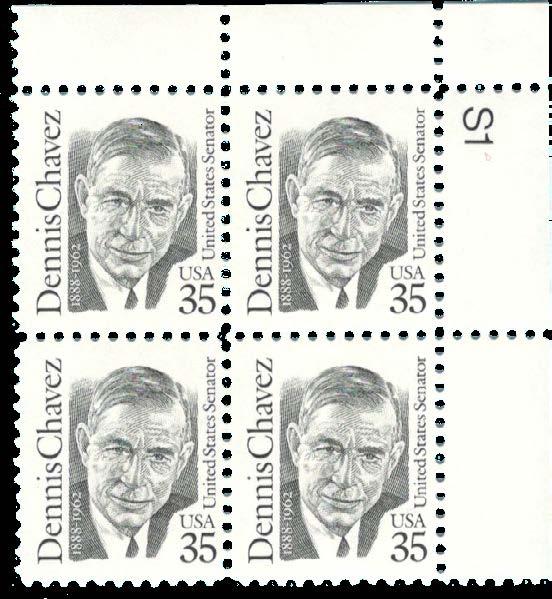
Figure 2. Chavez plate number locations.
Figure 3. Two of six collectible plate block positions.
Esrati produced the diagram shown in Figure 2 illustrating the six plate number locations on each plate of 600 subjects. Figure 3 shows two of the six collectible plate block positions from plate S1. Figure 4 illustrates the biographical information printed in the selvage.
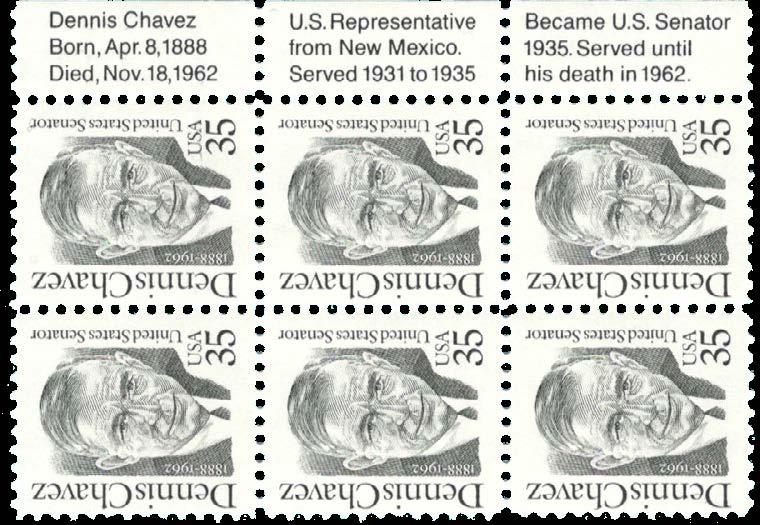
The stamps were printed on prephosphored uncoated paper, producing a mottled appearance under shortwave ultraviolet light. The gum is shiny. The stamps were perforated on an L perforator, so the corners of each stamp do not show bullseye matching perforations.
Both the philatelic and national media had a field day criticizing the Postal Service when it was revealed that the stamps had been printed outside the United States by a foreign business.
“I just find it absolutely shocking that the U.S. can’t print its own,” said Michael Laurence, editor of Linn’s Stamp News. “I’m just absolutely astounded.”
A federal law known as the Buy American Act directed government agencies to give purchasing preference to products made in the United States. Assistant Postmaster General Gordon C. Morrison deflected this argument by explaining that the paper was US made and shipped to Ottawa. After printing, the stamps were returned to the United States to be perforated and packaged to be forwarded to the Postal Service.
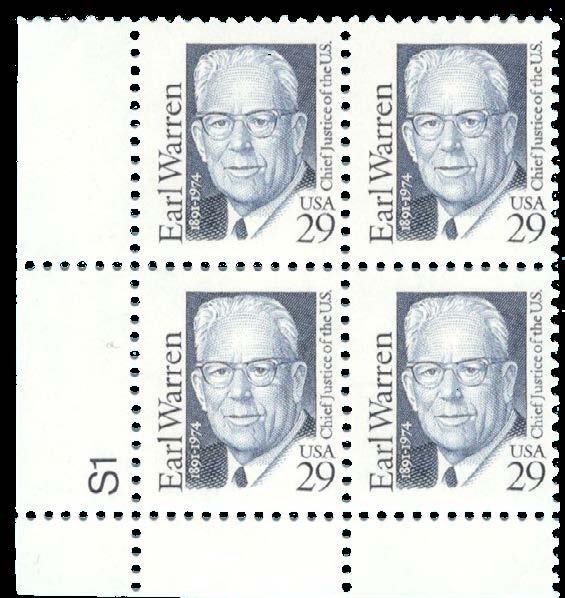
Pressure on the Postal Service was significant, so Postmaster General Anthony M. Frank, on April 12, acknowledged that another Great Americans stamp was being printed at CBNC, but it would be the last. He said, “With the exception of these two stamps, we intend to ensure that all stamps are printed in the United States through fiscal year 1992.” The second stamp printed by CBNC in Ottawa honored US Supreme Court chief justice Earl Warren. Again, the stamp designer was Chris Calle, but the engraver was world-renowned Polish engraver Czeslaw Slania. The issue was delayed as the Postal Service appealed the first class rates that became effective on February 3, 1991. The USPS lost its appeal and, in the process, missed the planned release date for the Warren stamp in 1991, the 100th anniversary of his birth year.
Figure 4. Selvage showing Chavez's biographical information.
Figure 5. Earl Warren plate block.
The Warren stamp was released as a 29¢ value, matching the current first class single-ounce domestic letter rate. Production details match those explained earlier for the Chavez stamp, except that stamp has comb-produced bullseye perforations. The stamp had its first day of issue on March 9, 1992, in Washington, DC. Figure 5 shows a plate block, one of the six collectible positions. Figure 6 shows the biographical data printed in the stamp pane margin.

The Postal Service also had another Great Americans stamp contracted with Stamp Venturers. This was a stamp to honor the 250th anniversary of the birth of Thomas Jefferson. The stamp was issued on April 13, 1993, in Charlottesville, Virginia. As with the Warren stamp, the value assigned was simply the current first ounce domestic letter rate, 29¢. Figure 7. shows the Thomas Jefferson stamp.

By this time, Stamp Venturers had their own intaglio sheet-fed TA-2 press, located in a facility in Ogdensburg, New York. The Jefferson stamps were printed in Ogdensburg. The stamps were perforated and further processed in Milwaukee. The stamp is printed on prephosphored coated paper that specialists have described as grainy appearing. The gum is also different from previous issues. It is low gloss and unstriated. The perforations were added by a comb perforator, so they have a characteristic bullseye match at the four corners.

Figure 6. Earl Warren biographical information.
Figure 7. Thomas Jefferson stamp.
Figure 8. Jefferson plate number and layout diagram.
There were marginal markings changes with this stamp, made to conform to new Postal Service guidelines regarding the placement, typeface, size, and position of text in the stamp selvage. First, the plate numbers were reoriented and reduced in size. A plate layout diagram was added to distinguish the position of each pane of 100 stamps, showing the pane’s location within the plate of 600 subjects. Figure 8 illustrates a block of eight featuring the plate number and the layout diagram.
Conspicuously missing from the Jefferson panes of stamps was a short biographical note in the selvage. These biographical notes had appeared on every new Great Americans stamp issued since the 5¢ Marin stamp debuted in February 1990. USPS project manager Joe Brocket, according to the 1993 Linn’s U.S. Stamp Yearbook, said, “When it’s useful to put some information there, we’ll continue to do it. But we’re not going to try to give people history lessons or capsule encyclopedias or anything like that anymore. It seems to be counterproductive and causes us more problems than benefits.”
Brockett cited the fact that Jefferson was well known. He was, arguably, the most widely known of the 53 people featured on Great Americans to that date.
Private Sector Can Be a Lower Cost Optional Source
Gary Griffith, a former editor of The United States Specialist, summarized another report from the GAO to the House Subcommittee on Postal Operations and Services on pages 599–607 of the December 1992, issue. The complete title of the report was “Postage Stamp Production: Private Sector Can Be a Lower Cost Optional Source.” The 54-page report summarized the USPS fiscal year 1991. In fiscal year 1991, the USPS spent $124 million to procure 54 billion stamps. Approximately 40 billion stamps were produced at the BEP, and the remainder, about 26%, were procured from the private sector.
Among the stamps identified in the report, two Great Americans were compared, head-to-head, as intaglio printings. We already mentioned that the 10¢ Red Cloud stamp cost the USPS $1.90 per thousand from the Bureau. This report identified the cost of the Dennis Chavez stamp at $1.70 per thousand from Stamp Venturers, a 10.5% savings for the Postal Service.
Other types of printings, by head-to-head comparisons of pairs of stamps, such as gravure, offset and offset-intaglio, showed significant private sector savings as well. The handwriting was on the wall; the Bureau’s days were numbered as the printer of Great Americans.

If you collect Plate Blocks, Booklets, Coils, or Sheets, the above website, with hundreds of sets at Face Value, will be a great savings to you. Enjoy the hobby.

Armen Hovsepian (APS 150170)
P. O. Box 24222 Overland Park, KS 66283 info@USatFACE.com

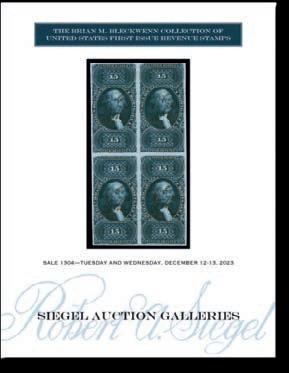


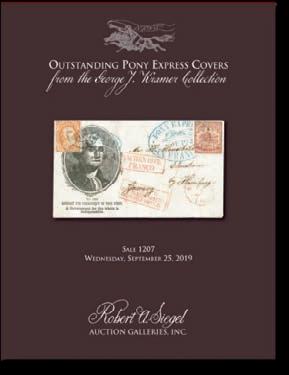


Siegel offers unparalleled expertise, a worldwide client base, financial reliability, intelligent marketing, and the best internet resources of any philatelic auction house. Contact us today to learn more about consigning with Siegel and ensuring your legacy.

21 West 38th Street, 7th Floor
Phone (212) 753-6421
Email: stamps@siegelauctions.com

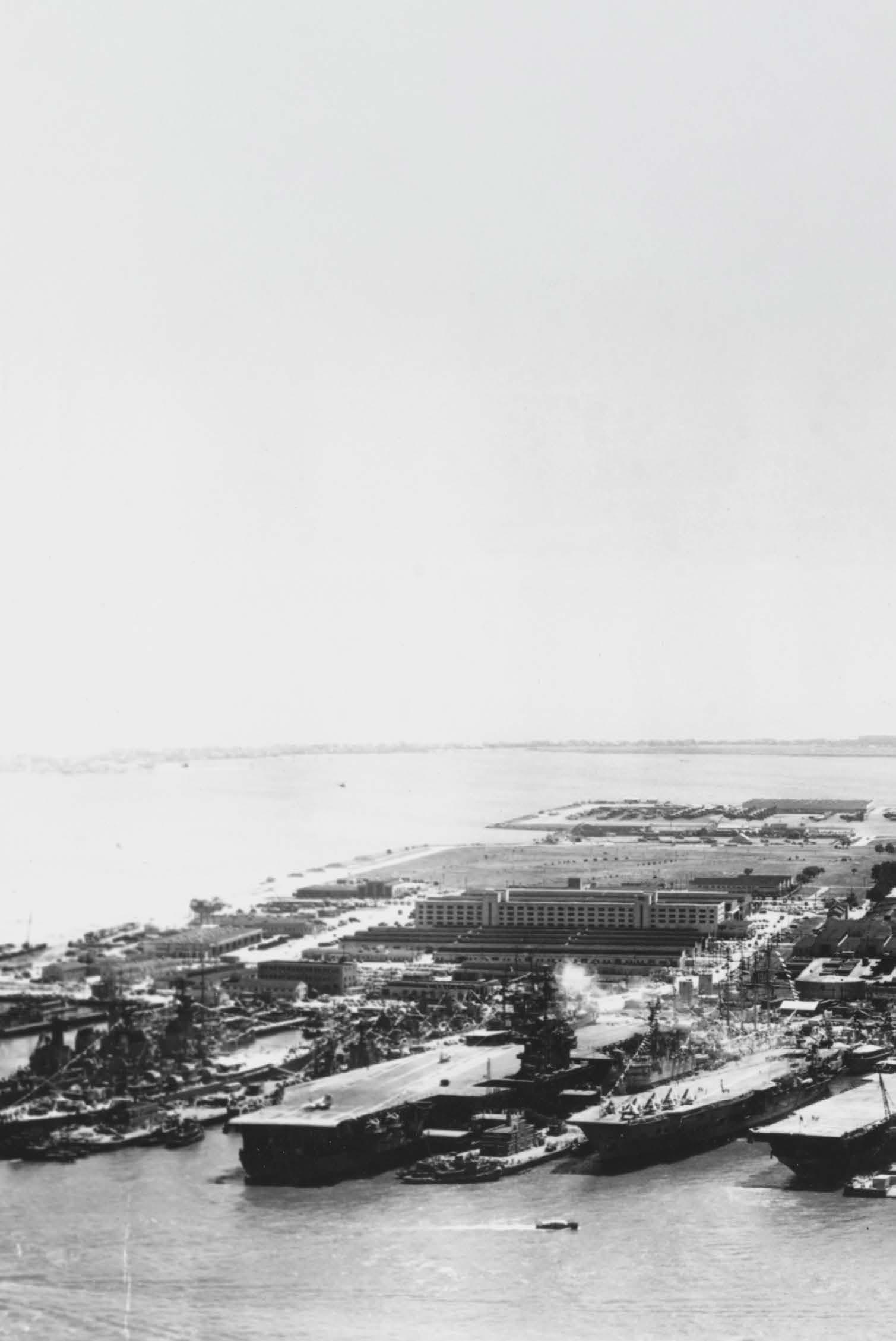
1957 International Naval Review
by Rodney A. Juell USSS #13852 | P.O. Box 3508, Joliet, IL 60434

This month’s photo shows Postmaster General Arthur Summerfield (left) reviewing final art work for the 1957 International Naval Review stamp of 1957 (Scott 1091) with Secretary of the Navy Thomas S. Gates, Jr. The “Naval Review” which included 113 ships from 17 nations, was held in conjunction with the Jamestown Festival, a festival commemorating the 350th anniversary of the founding of the British colony at Jamestown. First day ceremonies were held on board the USS Saratoga.
Shown nearby is a plate block signed by William Schrage, who modeled the stamp; Richard Bower, engraver of the vignette; and Robert Jones, who engraved the lettering, frame and numeral.
Vintage Photo of the Month
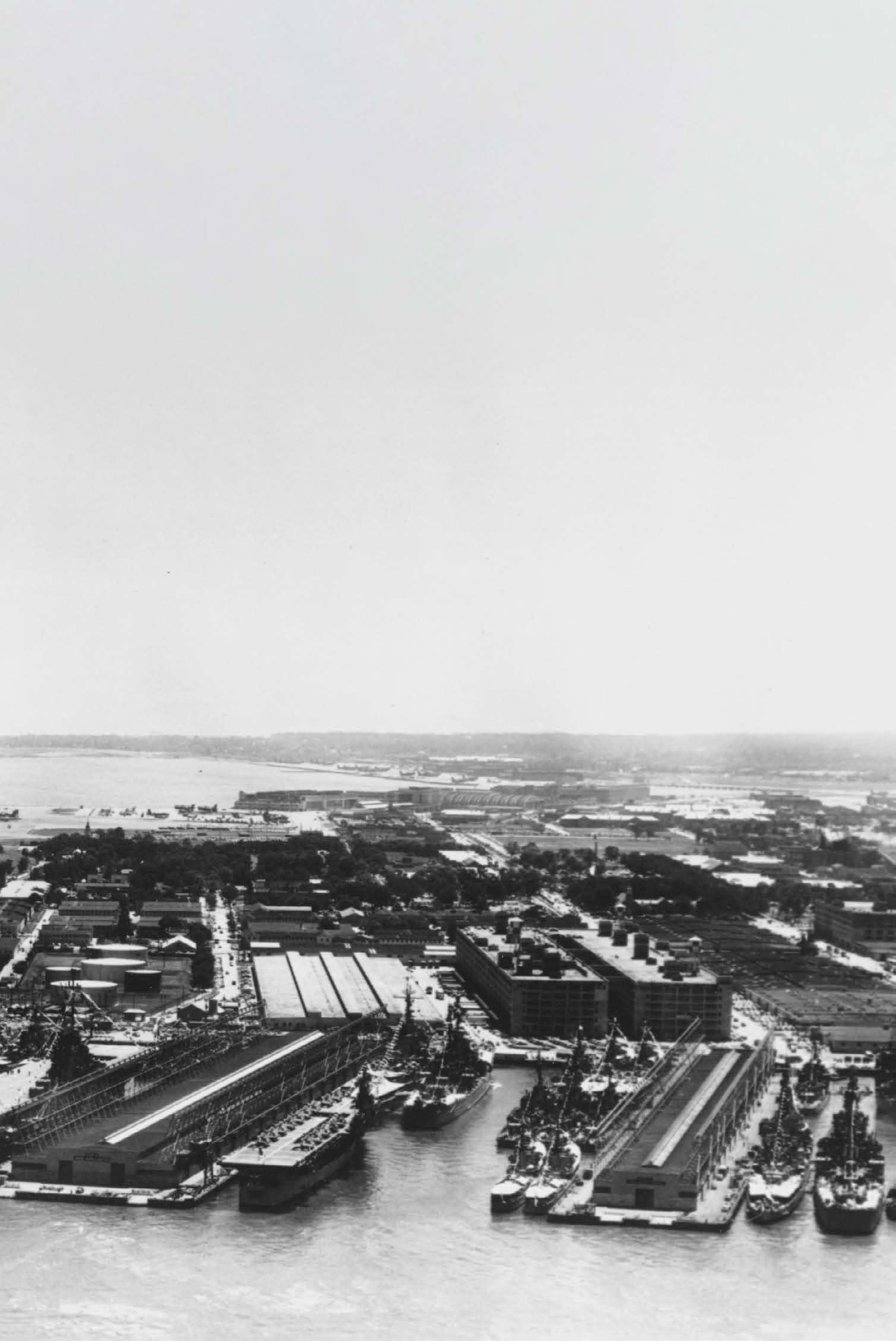

Advertise in The United States Specialist
Deadline for ad copy is the 20th of the second month preceding the month of publication, as April 20 for the June issue. There is a 5% discount for payment in advance or with copy. To place an ad or for help with ad design, contact the Editor, Andrew Kelley, at (720) 839-5848

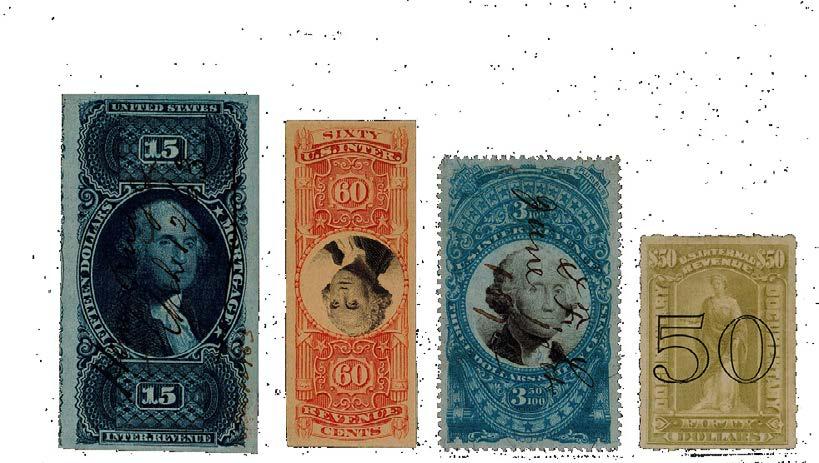




FDR and the 1927 Lindbergh Airmail Stamp, Part II
by Paul M. Holland USSS #16849 | m pholland.thorleaf@gmail.com

Following the celebration in St. Louis,1 Lindbergh began a Goodwill Tour during which he flew the Spirit of St. Louis on a visit to all 48 states. Especially notable was Lindbergh’s visit to Springfield, Illinois, on August 15, 1927, where the airport was renamed “Lindbergh Field” and a special airmail flight was authorized by the Post Office Department from Springfield to St. Louis. The Post Office Department (POD) provided an official POD cachet and a handstamp reading “Carried in Mail Plane Escort to Col. Lindbergh.” From Springfield the accompanying mail plane carrying 420 pounds of mail was flown by Lindbergh’s long-time friend and fellow airmail pilot, H. A. “Bud” Gurney, with whom Lindbergh had taken his first airplane ride at the flying school in Nebraska
Lindbergh Airmail Stamp
in 1922. It is said that after the mail was loaded, Lindbergh himself took the mail plane up for a short flight over Springfield, thus allowing these covers to be classified as being “flown by Lindbergh.” In any case, Gurney piloted the official mail plane to St. Louis while Lindbergh flew the Spirit of St. Louis.2 My examples of these special flight covers are shown in Figure 1.
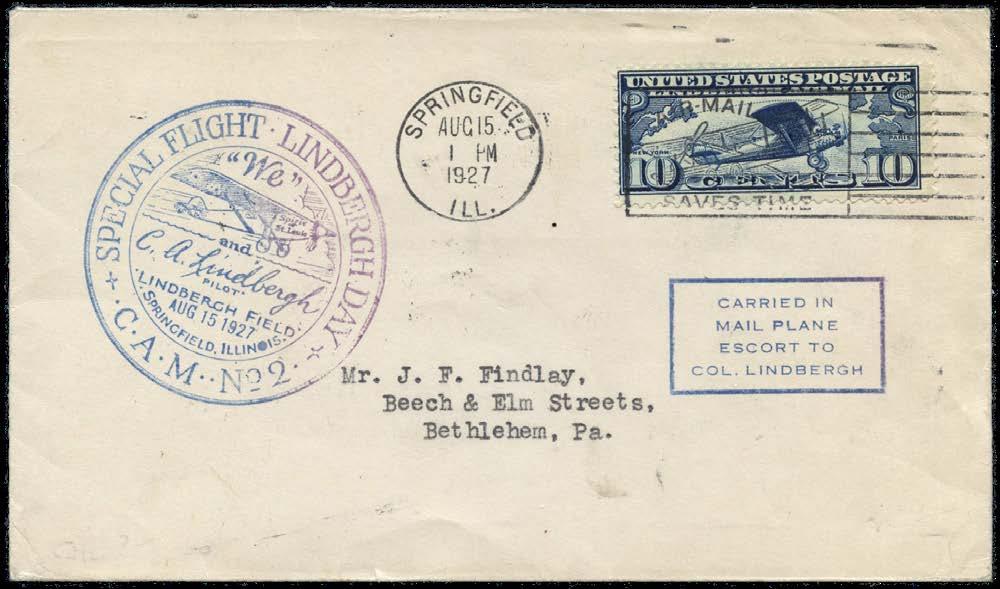

Collectors exhibited a strong interest in obtaining covers flown by Lindbergh, so on his own application and with the full cooperation of the POD, Lindbergh returned to carrying mail on his old CAM-2 route for two days on February 20–21, 1928. These covers carry a special POD cachet in the shape of a horseshoe inscribed “Lindbergh Again Flies the Air Mail.” Routing was northbound to Chicago from St. Louis on February 20, and southbound on the 21st.
Collector response was overwhelming, and the large amounts of mail required the use of more than one mail plane in most cases. However, Lindbergh personally flew each mail plane at least briefly.2 My examples of these covers are shown in Figure 2. Lindbergh is shown preparing to leave Chicago early on the morning of February 21 in Figure 3. My cover for the northbound leg from Peoria to Chicago with green horseshoe cachet is one of the few that was exclusively flown by Lindbergh. Among the other pilots was
Figure 1. Special flight from Lindbergh Field, Springfield, Illinois, on August 15, 1927.
Lindbergh’s old friend “Bud” Gurney, with further details of this two-day operation provided elsewhere.2 Note also that my southbound cover flown from Springfield is franked with one of the 10¢ airplane and map stamps of the type used in Lindbergh’s original CAM-2 flights as an air mail pilot.
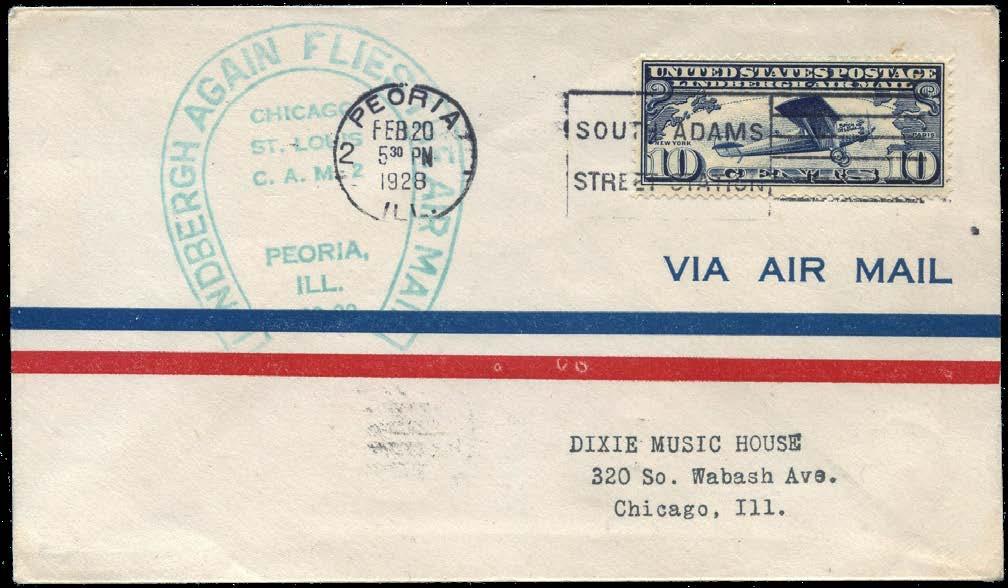


In recognition of Lindbergh’s “contributions to aerial navigation by flying solo nonstop from New York to Paris,” he was awarded a Congressional Gold Medal in an Act passed on May 4, 1928. For this honor, a special Lindbergh medal was designed by Laura
Figure 2. CAM-2 covers from “Lindbergh Again Flies the Air Mail” event in February 1928.
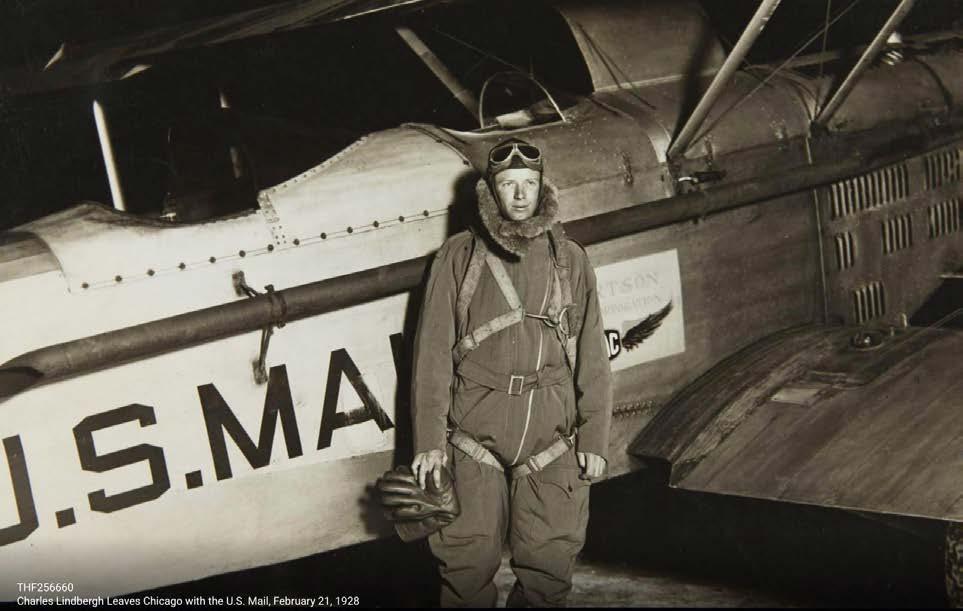
Gardin Frazer, a noted American sculptress, that was later struck in gold by the United States Mint. It was presented to Charles Lindbergh by President Calvin Coolidge at the White House on August 15, 1930. The obverse of this high relief, nearly 3-inch in diameter medal depicts Lindbergh wearing the leather flying helmet of an aviator; the reverse a lone eagle in flight above the Earth, where the sun and stars symbolize flying through day and night. Using the same dies, the Mint also struck examples of this large medal in bronze, and for a time these were made available to collectors.3 I’m fortunate in having the pristine example of this beautiful bronze medal shown in Figure 4.


Because of the reputed “enormous demand” for production of the 10¢ Lindbergh airmail stamp in booklet form, the stamp was also issued in this format on May 26, 1928. These were printed from four plates in sheets of 180 subjects, then cut into booklet panes of three. My example of one of these booklet panes is shown in Figure 5. In reality, the
Figure 3. Lindbergh preparing to fly CAM-2 mail plane from Chicago on February 21, 1928.
Figure 4. Lindbergh Congressional Medal from the United States Mint in bronze.
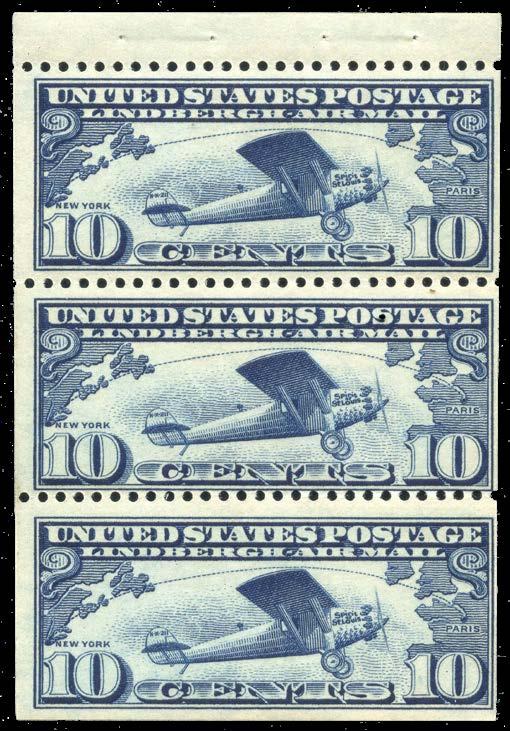
demand for these was disappointingly small, especially once the domestic airmail rate dropped to 5¢ a few months later on August 1, 1928.
Usages of the 10¢ Lindbergh airmail stamp is another collecting topic. My favorite example shown in Figure 6 is from June 25, 1928. This airmail cover was sent to FDR from Los Angeles, California, but is addressed only to “Mr. Franklin Roosevelt, c/o Democratic Convention” in Houston, Texas. Penciled notations on the front indicate that the cover was delivered to the Rice Hotel, with the scrawled number 1360 likely FDR’s hotel room number. The time and date backstamp shows that it was processed at the hotel at 3 pm on June 28, 1928. We know that FDR received it since there is also a Harmer auction authentication backstamp verifying that it ended up in FDR’s personal stamp collection.
At the time this cover was sent to FDR he held no public office but had traveled to the Democratic National Convention in order to place Alfred E. Smith’s name into nomination for President. FDR’s nominating speech, broadcast on radio nationwide on June 27, was so well received that he was almost instantly talked up as a likely future candidate for President. This was a crucial step in his political comeback, and it was also his first public appearance without using crutches after being afflicted by polio in 1921. For this, FDR had carefully practiced “walking” in his leg braces by pivoting his hips while holding tightly to the arm of his son Elliot. Following the convention, Al Smith persuaded FDR to run for Governor of New York State, a contest that he narrowly won, thereby putting FDR firmly on his future path to the White House.


Figure 5. Booklet pane of the 10¢ Lindbergh airmail stamp.
Figure 6. Airmail cover sent to FDR at the 1928 Democratic Convention in Houston, Texas with enlargements of the markings on the reverse.
In should be mentioned that the first commercial transatlantic air travel from the United States to Europe, with sleeping accommodation for up to 20 passengers, began the year after Lindbergh’s historic flight via the lighter-than-air ship Graf Zeppelin. Following a harrowing storm-plagued Atlantic crossing from Germany, the first flight departed from Lakehurst, New Jersey, on October 28, 1928, with my cover for this event shown in Figure 7. This is correctly franked at $1.05 using a colorful array of US airmail stamps, including two each of the 10¢ Lindbergh airmail stamps and new 5¢ Beacon airmails, along with airplane and map stamps, plus a 24¢ airmail depicting a De Havilland biplane such as that flown by Lindbergh as an airmail pilot. Unusually, my example is addressed to “Stamboull, Constantinople, Turkey,” the exotic far terminus of the famed Orient Express train. Originally posted from Washington, DC, on October 26, 1928, backstamps show departure from Lakehurst on October 28 and arrival at the Zeppelin field at Friedrichshafen, Germany on November 1, 1928. The backstamp for Stamboul (Istanbul) in Turkey shows arrival on November 5, 1928, almost certainly by train.
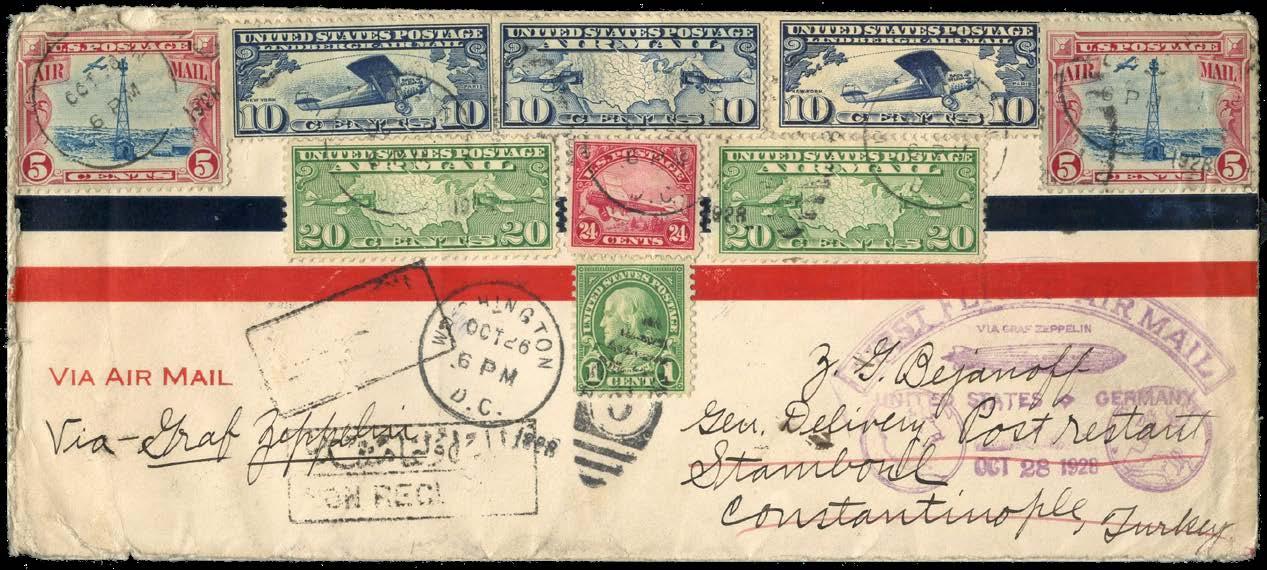

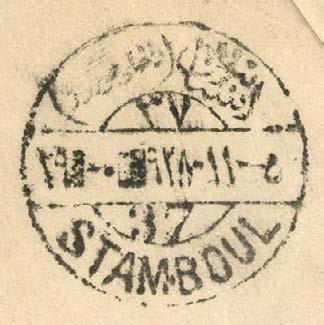

Figure 7, 1928 Graf Zeppelin first flight cover from the United States to Europe with enlargements of transit marks and cachet on reverse. Note the use of 10¢ Lindbergh airmail stamps.
Following Charles Lindbergh’s United States and Latin America Goodwill Tours during 1927–1928, where he flew the Spirit of St. Louis on visits to all 48 states and various destinations in Central America and the Caribbean, he became a technical advisor for Pan American Airways (PAA). Here, Lindbergh played a key role in Juan Trippe’s ambition to win government contracts for new Foreign Air Mail (FAM) routes for PAA ,


including piloting survey flights and laying out potential routes. This is a complex topic and beyond the scope of this article, so I will simply focus on FAM-5, the first of these. Here, on February 4, 1929, Lindbergh flew a Sikorsky S-38A flying boat with Juan Trippe as a passenger. Figure 8 shows Lindbergh in his flying helmet preparing to leave Miami (left) and later loading mail at Cristobal for the return flight from the Canal Zone on the right.
Shown in Figure 9, are FAM-5 first flight covers from my collection that Lindbergh flew between Miami and Cristobal in the Canal Zone in February 1929. Note that the required postage was 27¢, with the top two covers employing 1928 International Civil Aeronautics Conference stamps, the balance being paid by either a 17¢ Fourth Bureau Woodrow Wilson stamp (Scott 623) or airplane and map stamps. For the return flight from Cristobal in the Canal Zone, only official Canal Zone stamps were authorized, so the 27¢ postage was paid by combining a 25¢ overprinted airmail and 2¢ Canal Zone stamp (Scott C3 and 106) both depicting Major General George Washington Goethals, chief engineer and later Governor of the Panama Canal Zone. Postal markings show departure from Miami at 5:00 am February 4, and arrival in Cristobal, Canal Zone at 4:30 pm on February 6. 1929. The return flight also piloted by Lindbergh, left at 5:00 am on February 10, with arrival in Miami at noon on February 13, 1929.
In the meantime, after winning the governorship of New York State in November 1928, the same year that Herbert Hoover was elected President, FDR became a national political figure. The Great Depression began following the stock market crash in October 1929. FDR was overwhelmingly re-elected Governor of New York in 1930, and then became the winning Democratic candidate for President in 1932.
As President, FDR received lots of mail, and among the many covers in my collection are Lindbergh related items. These include the airmail cover sent to FDR from St. Louis on May 12, 1933. Shown in Figure 10, the bi-color printed cachet celebrates the sixth anniversary of Lindbergh flying the Spirit of St. Louis to New York in preparation for his historic solo flight to Paris. Note the half-tone image of Lindbergh with the Spirit of St. Louis and vignettes above showing the apotheosis of St. Louis and the Statue of Liberty. Another, shown in Figure 11, was sent to FDR from Springfield, Illinois, on the sixth anniversary of Lindbergh’s historic flight to Paris. Overfranked with a 10¢ Lindbergh airmail stamp, this cover has a printed cachet showing Lindbergh wearing a pilot’s helmet and goggles, situated between the Statue of Liberty and Eiffel Tower, with the Spirit of St. Louis flying overhead.
Figure 8. Lindbergh in February 1929 with Sikorsky S-38A flying boat for FAM-5 first flight from Miami (left) and for the return from Cristobal, Canal Zone (right).

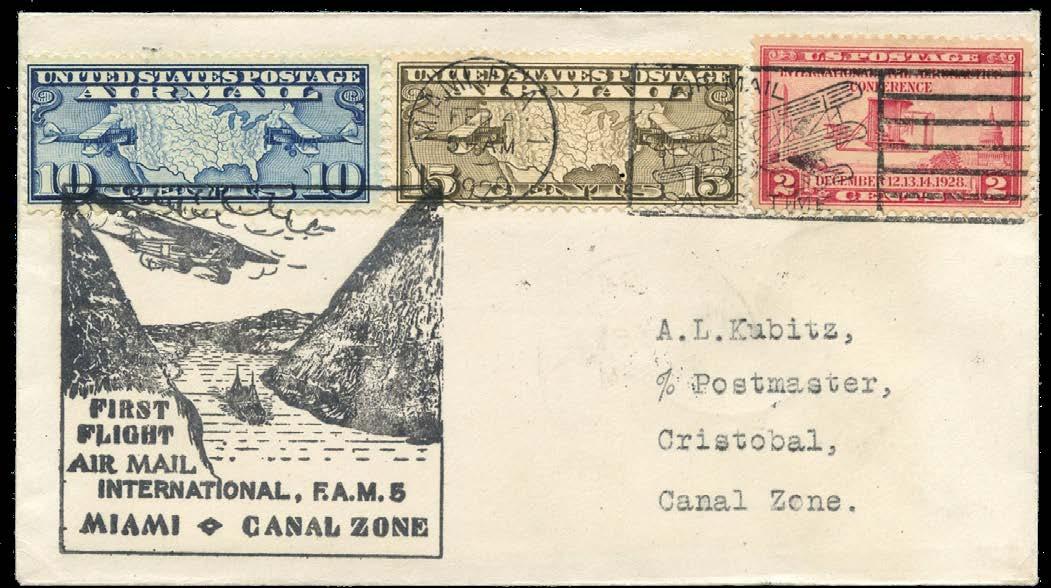

Figure 9. FAM-5 covers flown by Lindbergh between Miami and the Canal Zone.
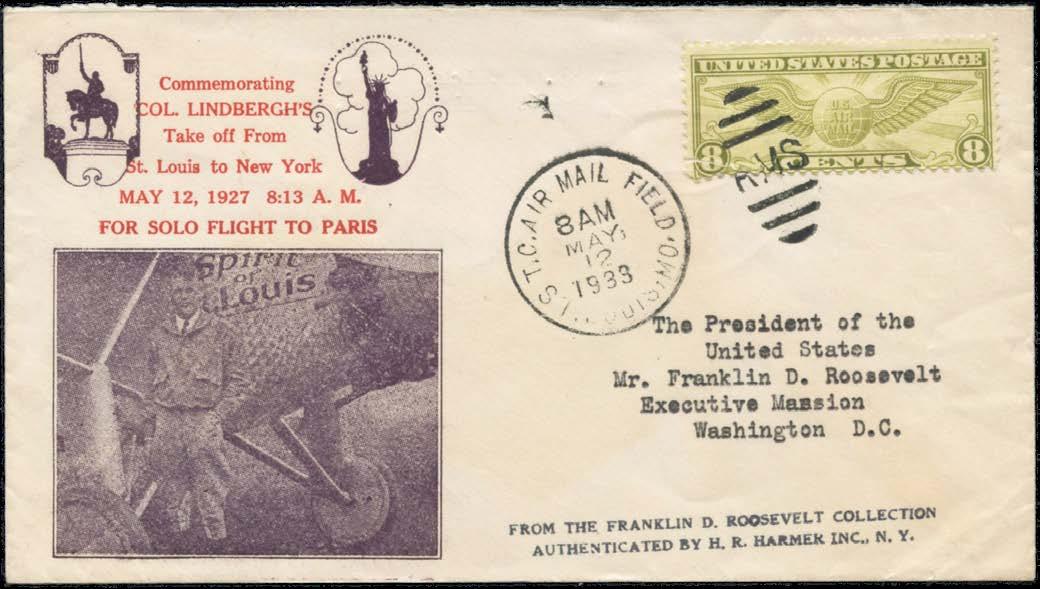
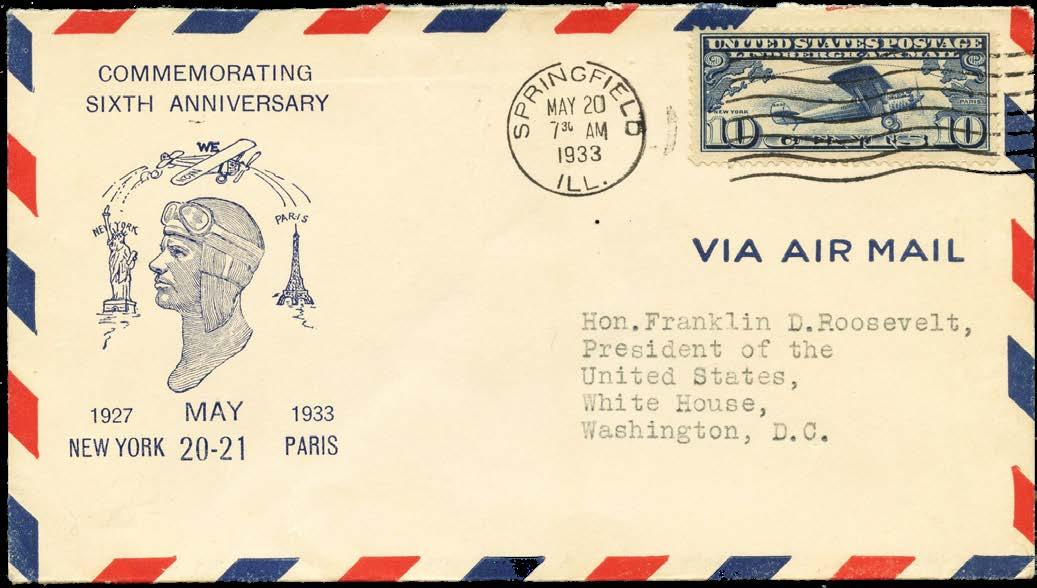
There is no question that Lindbergh’s pioneering flight to Paris became an international sensation, and this situation is reflected in my 1840–1945 representative worldwide stamp collection. Although the United States was the first to recognize this achievement by issuing the 10¢ Lindbergh airmail stamp less than a month after this historic flight on June 18, 1927, other stamps depicting the Spirit of St. Louis followed. For example, French stamps (Scott 243–244) celebrating a visit of American Legionnaires to France, issued in September 1927, depict the Spirit of St. Louis flying over an oceanliner situated between portraits of Lafayette and George Washington. These are shown in Figure 12, along with a January 1928 stamp from Panama (Scott 257) that was issued on special security paper during Lindbergh’s Latin America tour. Note the inscription “Homenaje a Lindbergh” or “Honor to Lindbergh.” Although perhaps my favorite of such designs
Figure 10. Cover sent to FDR on the sixth anniversary of Lindbergh’s flight from St. Louis to New York.
Figure 11. Cover sent to FDR on the sixth anniversary of Lindbergh’s flight to Paris.
is the Ibero-American Exhibition airmail stamp from Spain (Scott C56) issued in 1930. This shows Lindbergh’s portrait labeled “Carlos A. Lindbergh,” the Statue of Liberty and the Spirit of St. Louis being observed by a cat. So what’s with the cat? It turns out that in the presence of reporters just before departing on his transatlantic flight, someone suggested that a kitten given to Lindbergh as a mascot might be good company during the long flight. He responded that it would be too cold and “the kitten might die,” so the cat was left behind, and the widely publicized story eventually made it into the design of this 1930 Spanish airmail stamp.




Sadly, Lindbergh, who had become an authentic American hero at the age of 25, later faced the unforgiving challenge of great celebrity. Although beyond the scope of this article, I’ll provide a brief summary here.
In 1932, Lindbergh’s young son was kidnapped and murdered in what became known as the “Crime of the Century.” Driven to escape unrelenting publicity, he moved his family to Europe in 1935, and when visiting Berlin for the 1936 Olympics, Lindbergh was courted by Hermann Göring, head of the German Luftwaffe. At the request of the United States government, Lindbergh continued this relationship and was given extensive access to new German aviation technology, including being allowed to fly the front-line Messerschmitt Bf 109 fighter plane. He was even presented with a medal, the Order of the German Eagle, by Göring. This became controversial.
On Lindbergh’s return to the United States he met with Secretary of War Harry Woodring, followed by a meeting with FDR at the White House on April 20, 1939. Soon, World War II began in Europe, and Lindbergh became increasingly involved with the isolationist America First Committee, becoming its chief spokesman, espousing seemingly
Figure 12. Example 1927–1930 worldwide stamps depicting the Spirit of St. Louis.
pro-German views and strongly opposing sending aid to Britain. He resigned from the US Army Air Corps in April 1941 after President Roosevelt publicly rebuked him. Following the Japanese attack on Pearl Harbor, FDR declined to reinstate Lindbergh’s military commission, so Lindbergh instead became a civilian consultant, unofficially flying some combat missions in the Pacific. Lindbergh spent the rest of his life in and out of the public eye before dying of cancer in Hawaii in 1974.
Acknowledgment
The author would like to thank Richard B. Rose, editor of The Levant, Journal of the Ottoman & Near East Philatelic Society for his help in interpreting the date on the Stamboul receiving backstamp on the Zeppelin cover shown in Figure 7.
References
1. Paul M. Holland, “FDR and the 1927 Lindbergh Airmail Stamp, Part I.” The United States Specialist, June 2025, 253–261.
2. American Air Mail Catalogue, 5th edition, Volume Three, American Air Mail Society, Cinnaminson, NJ, 1978, 1409–78.
3. Kenneth M. Failor and Eleonora Hayden, Medals of the United States Mint, Department of the Treasury, U. S. Government Printing Office, Washington, DC, 1972, 263.
Quality
United States Stamps (1847-1945)
Singles (mint and used)
Plate Blocks
Booklet Panes plus Complete Booklets
Price lists-$2.00 each category
Price lists free on web: www.mountainsidestampsandcoins.com

We also buy quality U.S. and foreign stamps
Mountainside Stamps, Coins and Currency
P. O. Box 1116
Mountainside, NJ 07092
Tel: 908-232-0539 or 908-419-9751
E-mail: tjacks@verizon.net
Tom Jacks, owner Member APS, ASDA, USSS


Mrs. Glover’s Harding Memorial FDCs
by Jerry A. Katz USSS # 5873 | m jerryakatz@aol.com
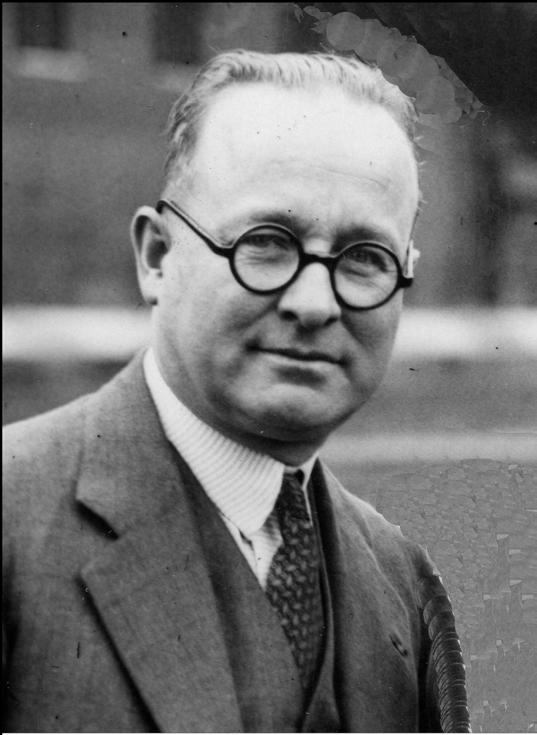

Warren G. Harding’s victory in the 1920 United States Presidential election ushered in a new Republican administration. Among the top appointees in the Post Office Department was the new Third Assistant Postmaster General, W. Irving Glover (Figure 1). His duties would include the responsibility for postage stamps.1
Glover’s appointment was likely affected by a personal favor he had granted to then-President-elect Harding before his inauguration. Both men and their wives had been booked on the same Central American cruise. The Glovers had earlier booked the best accommodations. Learning that the Hardings would be traveling on the same cruise, the Glovers gave them their stateroom. The couples struck up a friendship and the Glovers would become frequent guests at the White House.
Harding First Day Covers
Figure 1. W. Irving Glover.
Figure 2. Anna Bell Glover.
Glover was a successful businessman and savvy politician from New Jersey who became an advocate for the country’s stamp collectors. He realized that if the Post Office Department seriously catered to stamp collectors, both would benefit from the relationship. This was a major departure from the policies of previous administrations. His first effort was the establishment in December 1921 of the Philatelic Stamp Agency at the City Post Office in Washington, DC. It would provide collectors with new and past stamps, particularly selected for exceptional centering. The following year, he enacted policies that contributed to the birth of the modern first day cover (FDC). This included press releases with upcoming first-day-of-issue information for new stamps, the release of stamps at sites significant to the subject of the stamps, and public first-day ceremonies. He probably was influenced by his wife, Anna, who was a serious stamp collector.
Anna Bell Glover (Figure 2), the daughter of wooden shipbuilder magnate and banker John Englis, had been collecting stamps since she was fourteen years old. Her collection of thousands of stamps was said by the philatelic press in 1921 to be one of the best in the country owned by a woman. It would eventually include many outstanding covers and large die proofs which were received by Anna or her husband during his tenure in the Post Office Department. It’s interesting that of the many philatelic covers addressed to her, only one is known to have been addressed to Anna Glover, the rest being addressed to Mrs. W. Irving Glover.
While Glover was addressing a meeting of the Collectors Club of New York in late 1922, he said at the end of his speech, “I am not a collector, but my wife is.” His audience responded with laughter and applause. Anna became the first lady member of the Collectors Club that evening. She was also an active member of the Washington Philatelic Society and APS member no. 6318.
Glover became the Second Assistant Postmaster General in 1925. He was now responsible for the transportation of mail, which included the fledgling air mail service. It was an ensuing era where new air mail routes were rapidly being created throughout the United States and the Americas. Glover would take the Post Office Department out of the business of operating airmail planes while substantially expanding service by awarding contracts for new routes to private carriers. His office would prepare several first flight covers for his wife.
Anna died in January, 1932 at the age of 52 after a lingering illness.2 Glover would leave the Post Office Department in the following year when Democrat Franklin D. Roosevelt became President. It is not known if Glover was a stamp collector before taking office, but he soon joined the APS and retained Anna’s collection. He died in 1956. His daughter disposed of the collection not long after that. I recently made contact with a grandson who recalls the following about Anna’s covers.
I do remember many FDCs: Envelopes with stamps and signatures on them, i.e. Lindbergh, Amelia Earhart, presidents, etc. Many shoebox size boxes of them. And I think there were several Graf Zeppelins.
He does remember that the sales proceeds from one cover were sufficient enough for the family to buy a new car. However, he is not aware of the stamp dealer or auction
house who disposed of Anna’s collection for the family. Many of her covers have subsequently appeared in auctions.
President Harding died unexpectedly on August 2, 1923, after falling ill during a cross-country trip. Within two days of his death, stamp collector suggestions for a Harding commemorative stamp were being received at the Post Office Department. Glover reacted and issued a Post Office Department press release on August 17 saying that a black Harding Memorial stamp (Scott 610) would be placed on sale on September 1 at Marion, Ohio, Harding’s hometown, and at the Philatelic Stamp Agency in Washington, DC. Harding was a popular president, and FDCs were serviced in large numbers. I believe that the Glover cover collection would include thirteen Harding Memorial FDCs addressed to the Glovers. Three of them are documented and have been exhibited. The other ten are questionable.
The first of the three known Glover FDCs is also the earliest dated of the covers (Figure 3). The Glovers usually spent their late summer holiday at the Crestmont Inn in Eagles Mere, Pennsylvania. Glover’s office sent a registered Harding cover to Anna at that address but erred and sent it one day before the official release date of September 1.


Figure 3. Predated Harding Memorial FDC addressed to Ms. Glover.
Figure 4. Detail from the reverse of Figure 3, showing it was postmarked August 31, 1923, one day before the official first day of sale.
The reverse of the predated FDC shows August 31 postmark dates and the wax seal of the Third Assistant Postmaster (Figure 4). Registered Washington covers were normally date-stamped only on the reverse side of the cover.
The other two covers are both in the handwriting of Michael Eidsness Jr., the superintendent of the Post Office’s Department of Stamps. Eidsness represented the Post Office Department at the first day ceremony in Marion.
One of the two Eidsness covers is a correctly dated Washington FDC addressed to W. Irving Glover at Eagles Mere (Figure 5). Plate numbers 14852 and 14853 are found on the stamps on the cover. A Department of Stamps wax seal is on the reverse of the cover. The second cover is a Marion FDC (Figure 6) addressed to Mrs. Glover at Eagles Mere and is on the business stationery of Dr. George T. Harding, the brother of the late President.
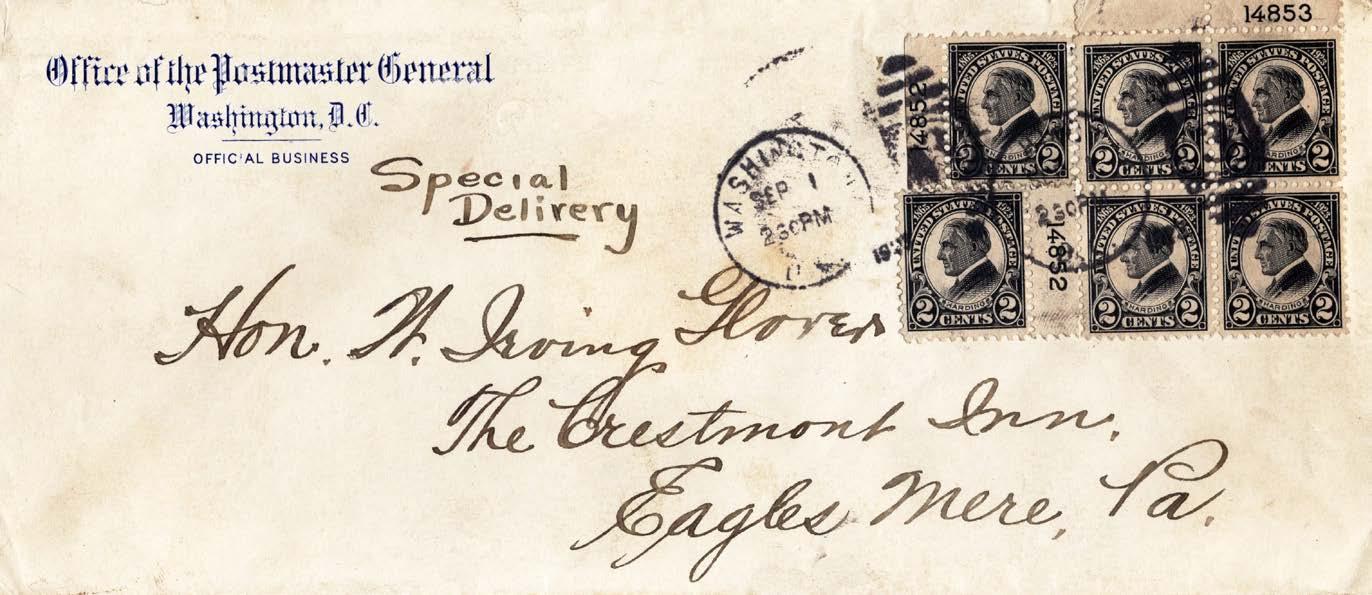

Figure 5. First of two FDCs sent by Superintendent Eidsness.
Figure 6. Second of two FDCs sent by Superintendent Eidsness.
All that I currently know about the other ten covers is found in Philadelphia dealer Philip Ward, Jr.’s column in the May 25, 1962, Mekeel’s Weekly Stamp News:3
When the Harding stamps were first placed on sale, hundreds were mailed on the first day from both Marion, Ohio and Washington, DC.
Mrs. Glover, the wife of the Third Assistant Postmaster General, was interested in stamps, particularly in covers of historic importance, and her husband arranged to have mailed to her on the first day from Marion, one of the mourning covers from the President, as well as from each of the Cabinet officers. This is possibly one of the most interesting sets of first day covers existing. They are all postmarked “Marion, Ohio September 1, 1923–5 AM ” which is undoubtedly the very earliest hour of postmarking for these covers.
They all have black mourning borders 5/16 inch wide with a nicely centered copy of Harding on each. The one from President Coolidge has a corner card reading: “THE WHITE HOUSE OFFICIAL BUSINESS PENALTY FOR PRIVATE USE $300”. The one from the Secretary of State reads “DEPARTMENT OF STATE, WASHINGTON”; the one from the Justice Department reads, “OFFICE OF THE ATTORNEY GENERAL, WASHINGTON, D.C.”; the one from the Secretary of War reads “ WAR DEPARTMENT WASHINGTON D.C. OFFICIAL BUSINESS”; the one from the Post Office Department reads “OFFICE OF THE POSTMASTER GENERAL WASHINGTON D.C. OFFICIAL BUSINESS”; another reads NAVY DEPARTMENT OFFICIAL BUSINESS”; another, “SECRETARY OF THE INTERIOR WASHINGTON”; another, “THE SECRETARY OF AGRICULTURE OFFICIAL BUSINESS”; another, DEPARTMENT OF COMMERCE OFFICE OF THE SECRETARY WASHINGTON”; a further one reads, “DEPARTMENT OF LABOR , OFFICE OF THE SECRETARY WASHINGTON D.C. RETURN AFTER FIVE DAYS”. This most interesting series were addressed to “Mrs. W. Irving Glover, the Crestmont Inn, Eagles Mere, Pennsylvania.”
Shortly after Harding’s successor, Calvin Coolidge, took office, the White House began using black-bordered mourning envelopes, as mentioned by Ward, for official business. The nine executive branches soon followed the President’s example. It seems from the detail in Ward’s article that he either had possession of the covers or had recently seen them. I have unsuccessfully searched for evidence of them. Anna’s covers should not be confused with similar FDCs, also using official government mourning stationery that Ward received from Marion. Ward’s covers are in his handwriting but have plate blocks and are canceled at 9:00 AM (Figure 7). FDC servicer Edward C. Worden also prepared similar self-addressed Harding Memorial FDCs with plate blocks and 9:00 AM cancellations.
Ward may have written his Mekeel’s column from a faulty memory. If so, it was not the first time. Stanley Fryczynski interviewed Ward one year earlier in 1961 for an AFDCS article about Ward that was published soon afterwards.4 Ward claimed that he started his commercial cover servicing business with the Hayes FDC in 1922. 25 of his Hayes FDCs from Fremont, Ohio, were said to have been sold for one dollar each. I have studied the Hayes FDC for more than 60 years and have never seen or heard of these covers. Also, the Hayes FDC was not Ward’s first commercial cover. Rather, his first covers were probably the Pilgrim Tercentenary series (Scott 548–550) issued on December 21, 1920.

Ward advertised these for sale in Mekeels in January 1921.5 Perhaps Ward was similarly confused about the Glover FDCs. He died one year after his 1962 Mekeel’s article.
In either case, there are many questions about the Glover collection. Who was the dealer or auction house that handled Anna’s covers, and is there a catalog listing of lots? Does the catalog include the covers mentioned by Ward?
Alan Berkun, who extensively researched and documented Harding Memorial FDCs, once told me that he did not believe that the Ward-mentioned Glover covers exist. I also posed my questions to several large auction houses and received no positive responses. A check of the online APS library catalogue yielded no useful information. Can anyone help me out with the answers to my questions?
References:
1. Gary Griffith, The United States Fourth Bureau Issue, 1922–1938 (Joliet, IL: United States Stamp Society, 2022), chap. 1.
2. “Death of Mrs. Glover,” Mekeel’s Weekly Stamp News, February 1, 1932, 54.
3. Philip H. Ward, Jr., “U.S. Notes: 2c Harding Memorial, 1923 Unusual FDCs,” Mekeel’s Weekly Stamp News, May 25, 1962, 162.

The U.S. Philatelic Classics Society is a not-for-profit collector organization exclusively devoted to 19th century United States stamps and postal history. Our quarterly Chronicle is widely recognized for presenting new scholarship and discoveries. For membership information and much more, find us at: www.uspcs.org
Figure 7. Philip Ward FDC.



3
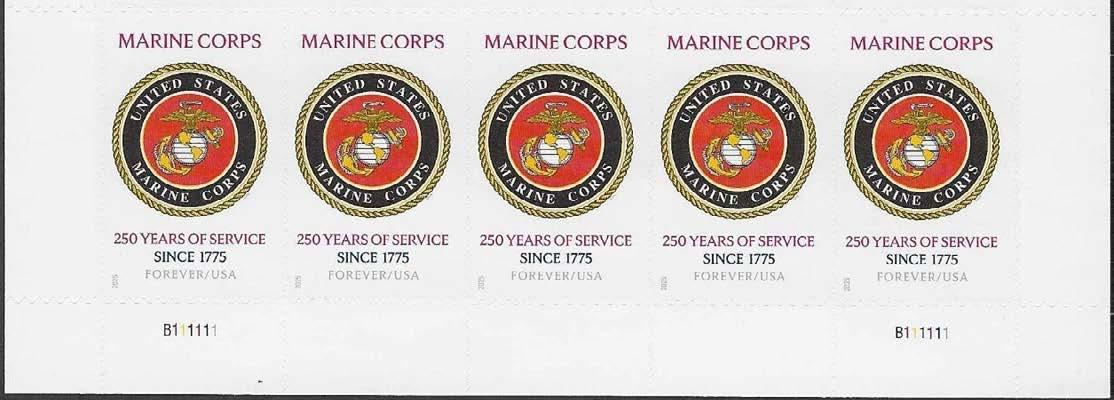
3

3 #???? Celebrating 250 years of the U.S. Navy B1111111 ‡ ‡ LL LR 3r x 2c 1,2,3,4,5,6*

3 Baby Wild Animals Booklet B1111

COORDINATORS: Members are invited to report their findings to the appropriate coordinator.
All issues through 1980
Sheet stamps after 1980
Kim D. Johnson
310 E N 3rd Street
Georgetown, IL 61846
Jim Cochrane P.O. Box 2009
Great Bend, KS 67530
Coil stamps after 1980 Jill Ambrose PO Box 54622 Cincinnati, OH 45254
Booklet stamps after 1980 Michael O. Perry P.O. Box 1194 Rainier, OR 97048
This monthly report is used to update the Durland Standard Plate Number Catalog.


Report of the Executive Secretary
APPLICATIONS RECEIVED FOR MAY 2025
17615 Scott Douglass, Palm Harbor, FL
17616 Francis Kelly, Midlothian, VA 17617 William Lockridge, Phoenix, AZ
17618 Scott Walker, Franktown, CO
APPLICATIONS PENDING
17610-17614
DONATIONS (received outside of annual dues cycle)
Leslie Butler Bernard Wojnowski
USSS Donations via PayPal
Recently, one reinstating member observed that our PayPal information is not easily located in The Specialist nor on our website. Renewal links and book orders automatically link to our PayPal account, but you may also send payments to USSS directly, and add a footnote to comment on the purpose, e.g. Renewal, Donation or Book-Durland. The PayPal account address is usorders@usstamps.org
Classified Advertising
USSS MEMBERS are entitled to two free ads of up to 40 words each year. Other ads are 10¢ a word, payable in advance. For 6 insertions, take a 5% discount; for 12 insertions, take a 10% discount. Ads with [1145] at the end expire with this issue. Make checks payable to USSS. Send copy and check to The United States Specialist, 9038 E. 25th Dr., Denver CO 80238. Free member ads may be emailed to: editor@usstamps.org. Emailing ads saves substantial time for you and the Editor and avoids errors .
WANTED
BUYING IMPERF FARLEYS with GUM. ALL offers welcome! Frank P Geiger Senior - APS Life since 1968 and ASDA since 1974. Phone: 787-6896879–FrankPGeigerSr@gmail.com–PO Box 3442–Pinehurst, NC 28374. [1150]
WANTED—PAYING TOP DOLLAR FOR C-13, C-14 and C-15 singles, both mint/used. Also interested in multiples, flight covers, Zeppelin-related posters, advertisements, etc. Graf Zeppelin specialist. Rob Lehmann email: diecasttoys@yahoo.com or call: 240422-0118. [1150]
WANTED TO PURCHASE #1053 HAMILTON $5 Commercial Usages. Especially need use to foreign destination. Also doing a survey so scans appreciated. Doug Weisz weiszcovers@gmail.com, 773-9144332. 33 W Ontario St. #48A Chicago IL 60654. www.douglasweisz.com [1152]
SEEKING USS INDEPENDENCE STAMP similar to Scott #4703 USS Constitution stamp. Bernard Wojnowski; 64 Mariner Rd., Vineyard Haven, MA 02568. [1155]
WANTED: CE2 TYPE 1C PLATE block MNH preferred. Send picture and price to whs1963whs@yahoo.com [1145]
RESEARCHER SEEKING OWNER OF 10-cent Motorcycle special delivery die proof that was presented to President Harding in 1922. Jerry Katz email: jerryakatz@aol.com [1144]
WANTED To BUY: COLLECTIONS accumulations, or duplicates of United States Plate number, mail early, ZIP code and copyright singles. Roger McDonald, 4210 Bratton Road, Corpus Christi, TX 78413. Also interested in buying United States plate number blocks. [1145]
SPECIALIST SEEKING OWNERS OF 10-cent Motorcycle Special Delivery die proofs or 11-cent Rutherford B. Hayes die proofs for research. Email Jerry: jerryakatz@aol.com [1146]
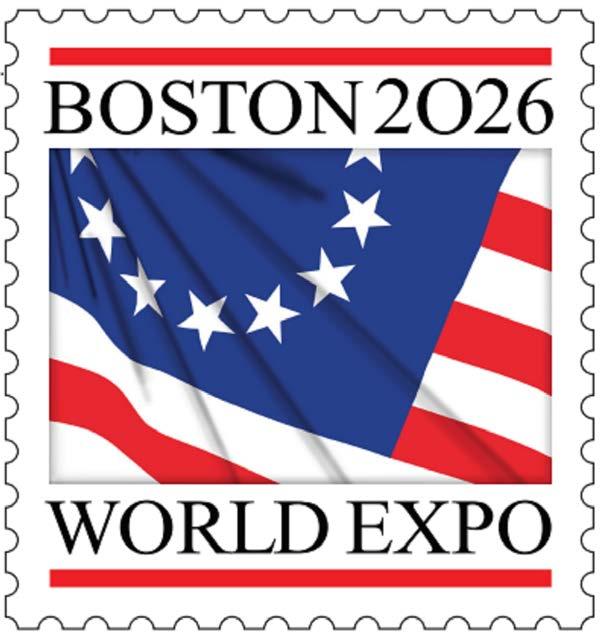
Precancel Stamp Society
Interested in Learning More about Precancels? Request a copy of “Th e ABCs of Precancel Collecting” and also receive a sample copy of the PSS Forum, the Precancel Stamp Society’s monthly journal. Contact: Frank Bird III, 1095 Pinellas Point Dr South, Apt 352, St. Petersburg, FL 33705-6377. Email: promo@precancels.com.
Index of Advertisers
Armen Hovsepian (www.USatFACE.com)......................................... 310 Boston 2026 (www.boston2026.org) ........................................336 Great American Stamp Show 2025 (www.stamps.org) .................................................334 Lewis Kaufman (kerik1@aol.com) ...................................................325 Mountainside Stamps, Coins and Currency (www.mountainsidestampsandcoins.com) 325 Precancel Stamp Society (www.precancels.com). 336 Richard Friedberg (www.friedbergstamps.com). 314 Robert A. Siegel Auction Galleries (www.siegelauctions.com) 311 Scott A. Shaulis (www.shaulisstamps.com) ................................... 310
U.S. Philatelic Classics Society (www.uspcs.org) .................................................... 331 United States Stamp Society (www.usstamps.org) 314, Covers
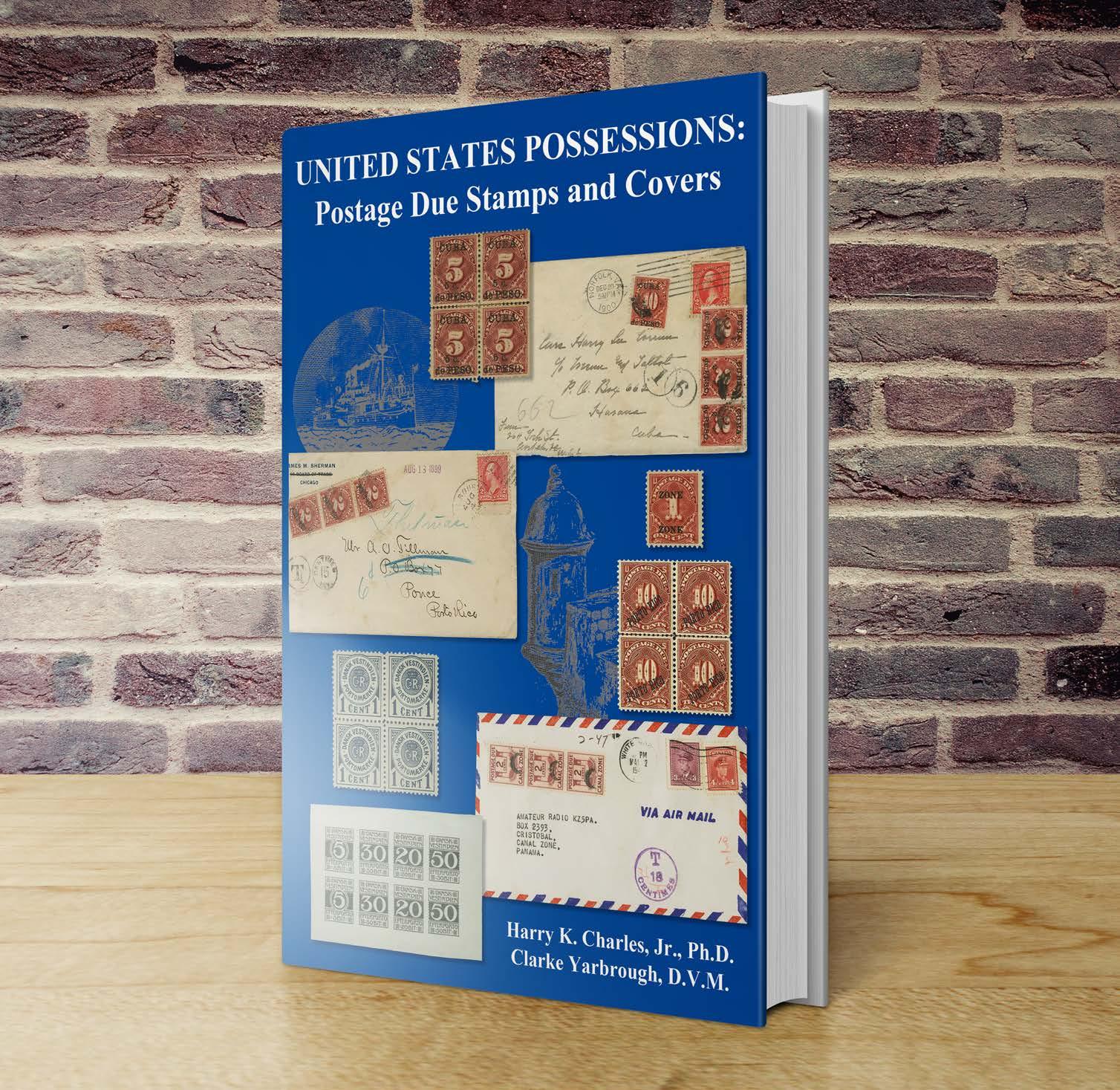
United States Possessions: Postage Due Stamps and Covers presents the story of Postage Due stamps used in the major possessions or territories of the United States. Written from a stamp collector’s perspective, the authors address the challenge of identifying the myriad of Possession Postage Due stamps by concentrating on stamp identification while also covering the Postage Due issues of Cuba, the Danish West Indies, Puerto Rico, the Panama Canal Zone, the Philippines and more.
In addition to the text, the monograph contains over 300 illustrations and five appendices which provide information to supplement and further explain key points. In many cases, the information presented is new or, if previously reported, organized in a new manner to help the reader understand the complexity of the Possession Postage Dues.
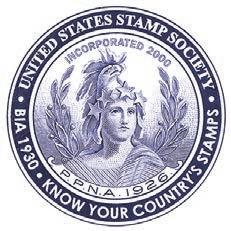
United States Possessions: Postage Due Stamps and Covers
Hard cover, 352 pages, 6-in × 9-in.
Member Price: $39 US postpaid Non-Member Price: $43 US postpaid Purchased online at: www.usstamps.org/store/ or by mail to: Executive Secretary, P.O. Box 1602, Hockessin, DE 19707-5602
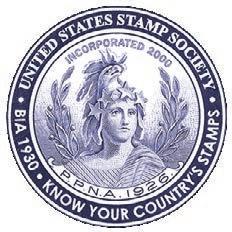
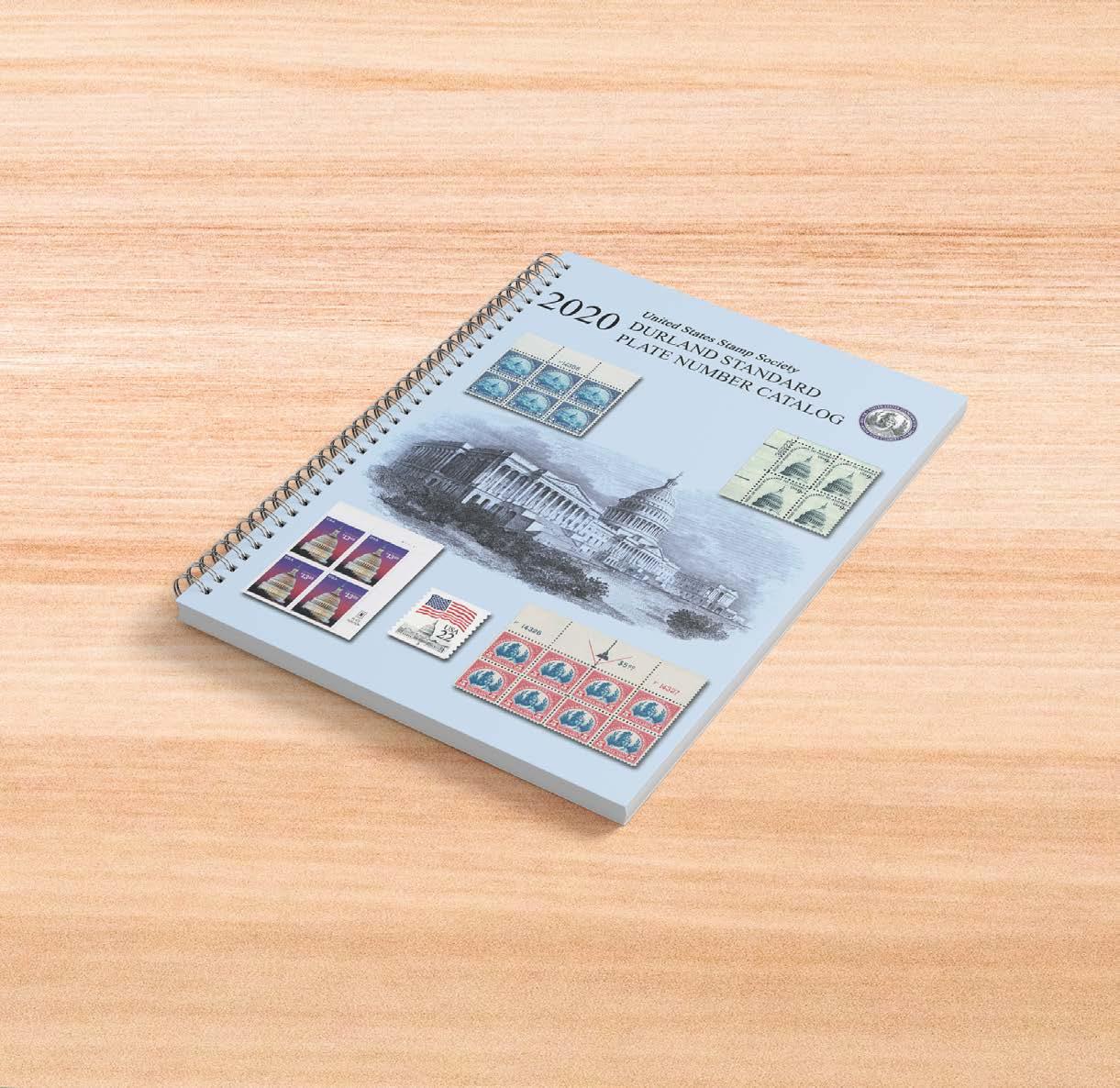
United States Stamp Society
The 2020 edition the Durland Standard Plate Number Catalog provides the most comprehensive research source for plate number information on United States postage and revenue stamps, including tax-paid revenue stamps, with listings for overprinted Possessions postage, Allied Military government stamps and other back-of-the-book stamps, dummy and test stamps, MDI "Blue Cover" booklets and partial plate numbers on booklet and coil stamps.
2020 Edition of the Durland Standard Plate Number Catalog 448 pages available in Perfect Bound or Spiral Bound format.
Member Price: $40 US plus shipping Non-Member Price: $45 US plus shipping
Order Online at: www.usstamps.org/store
